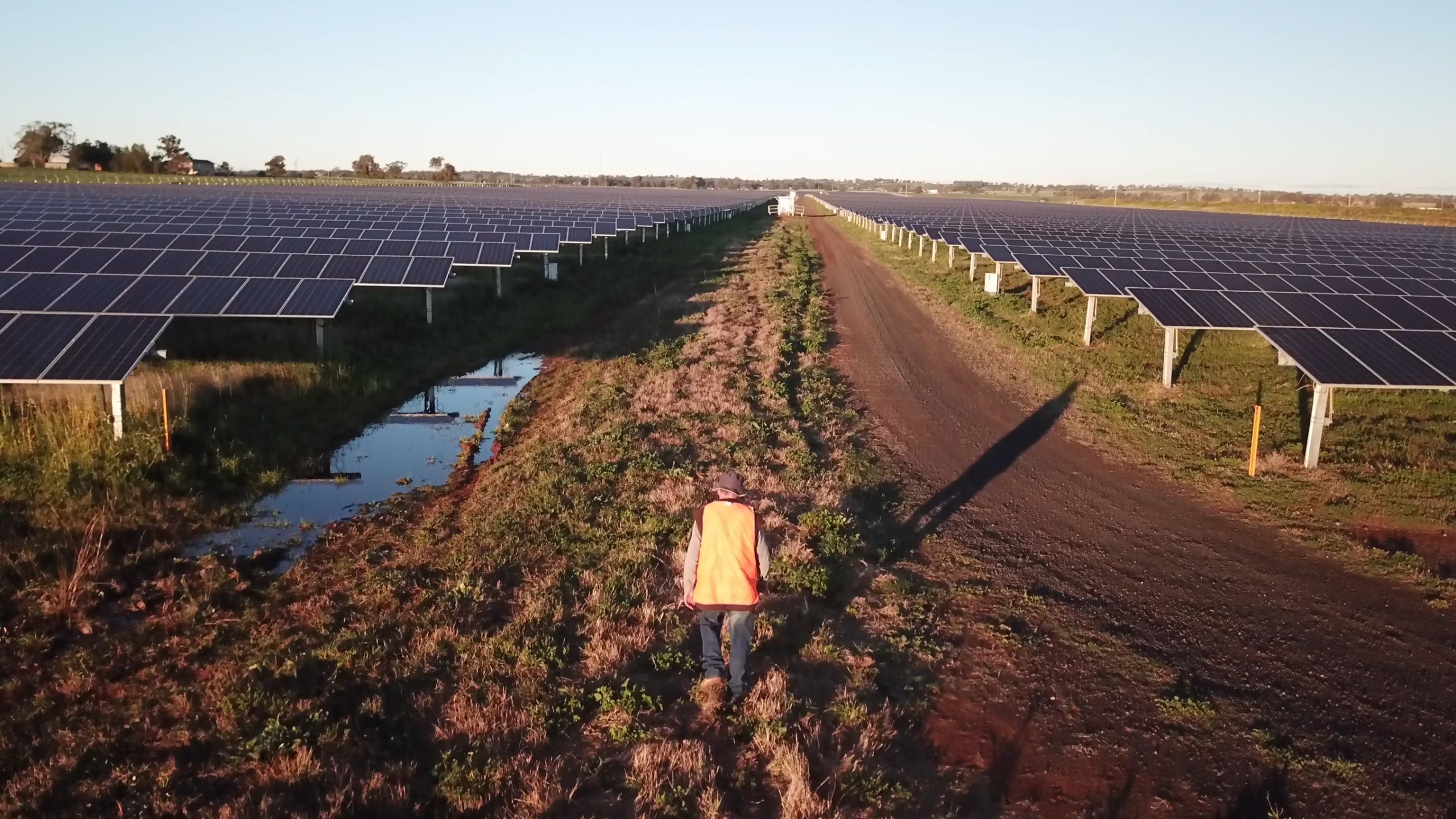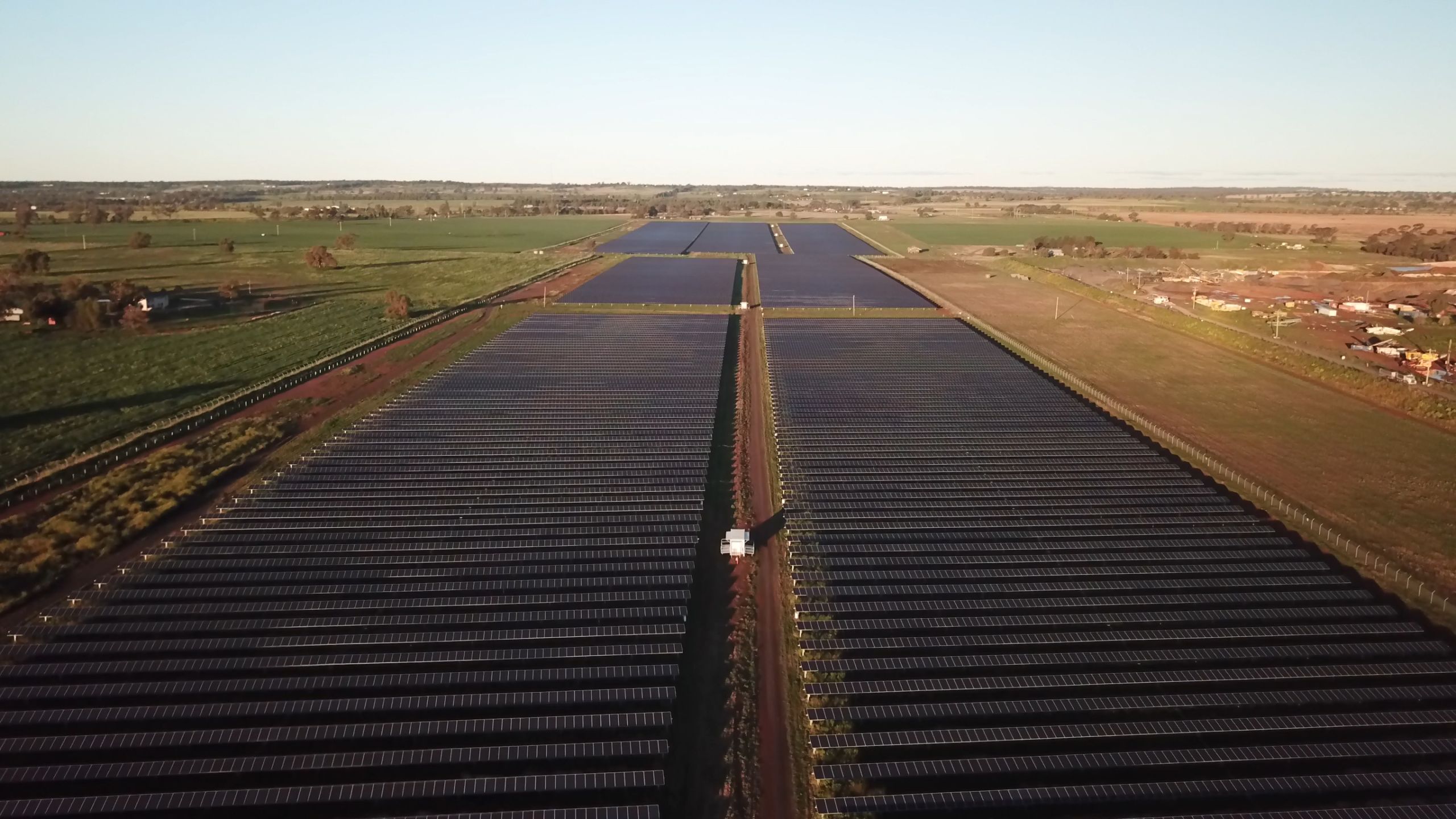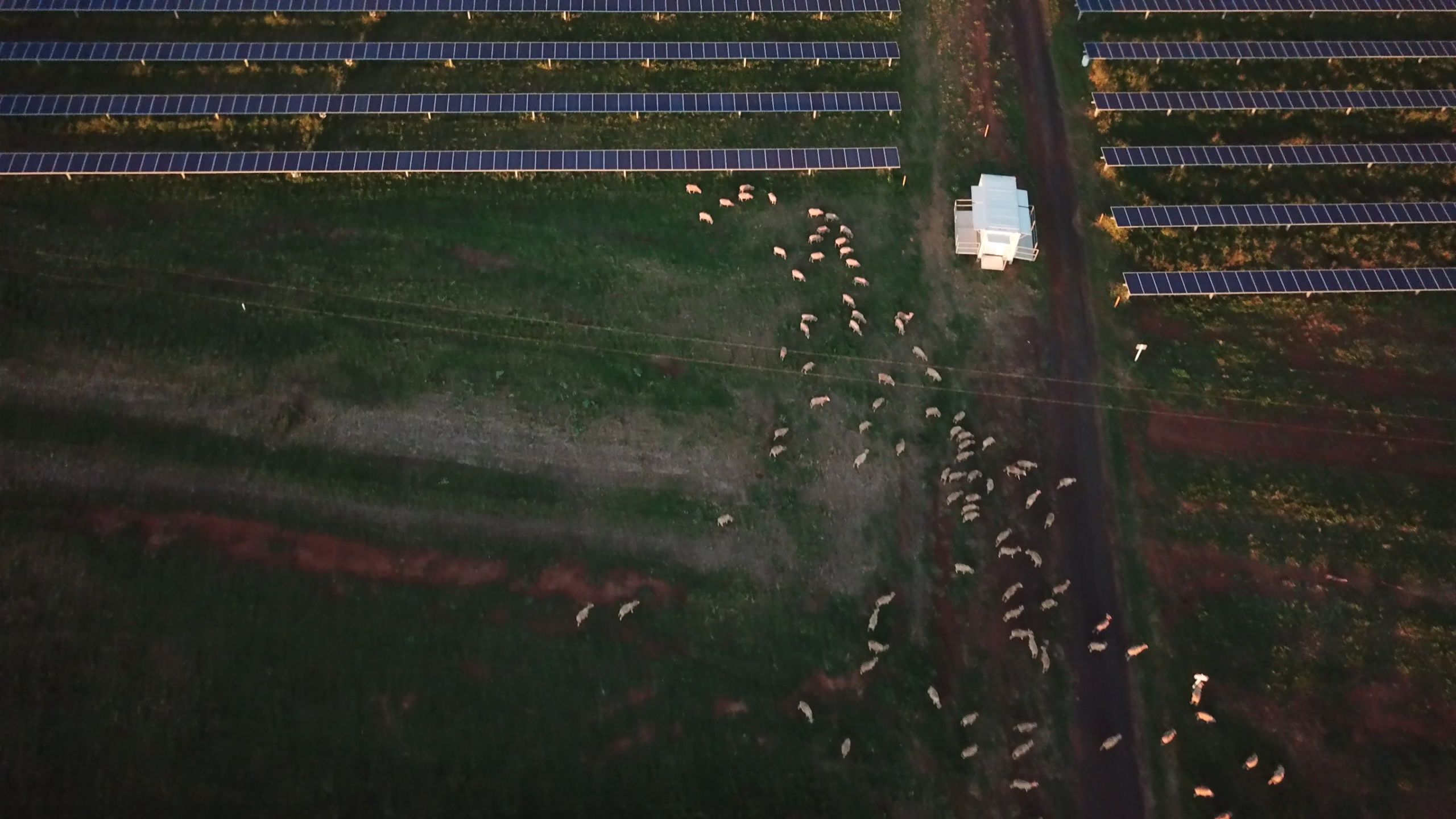The Clean Jobs Plan
How 76,000 new jobs for Australians can help rebuild our economy now and tackle climate change.

Australia is facing twin crises. After last summer’s climate change-fuelled bushfires many communities are still doing it tough, and now, hundreds of thousands of other Australians are out of work due to COVID-19.
Economic recovery is top of mind for Australians, and governments have a crucial role to play in making targeted investments, and implementing policies that can put Australians back to work. In doing so governments can choose to invest in initiatives that set us up for the future, creating win/win solutions that create jobs and tackle long-term problems at the same time.
This Clean Jobs Plan provides a whole-of-economy solution. It identifies 12 major policy opportunities to immediately kick-start economic growth. Collectively, these opportunities represent 76,000 jobs. Job creation would start immediately and over a three-year period.
Crucially, these opportunities are shovel ready, deliberately targeted to regions and occupations hit hardest by job losses, and have the potential to grow the entire economy in the long term.
These are jobs for the many Australians who need to get back to work now.
- 70% of the jobs are in construction and administrative services, sectors that have seen 80,000 jobs lost already to COVID-19
- 40% of the jobs are in regional areas; and
- A third of the jobs require minimal training
The analysis does not identify every job that can be created. Instead, it focuses on targeting regions and occupations hit hardest by job losses and on programs that can create jobs quickly.

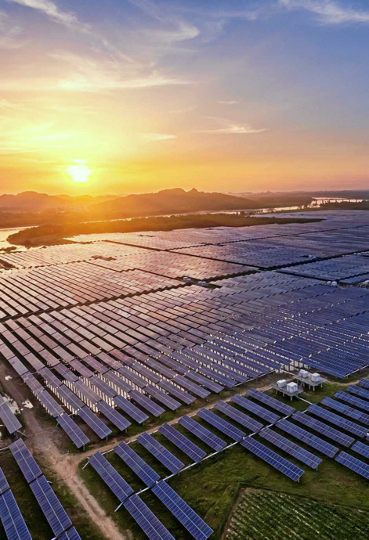
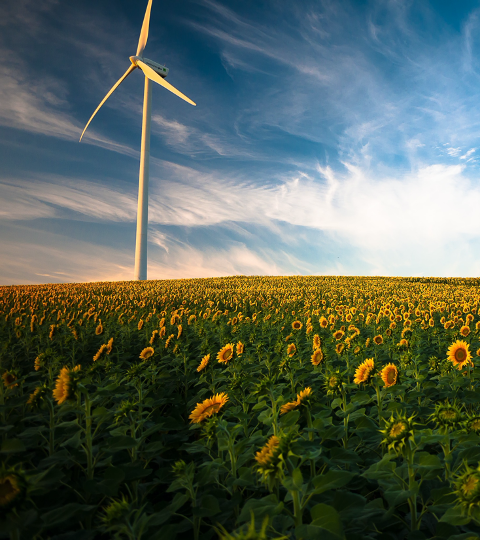
Dubbo video
Dubbo video
Twelve policy opportunities to deliver 76,000 jobs that re-engineer our energy system, renew industries and restore our environment
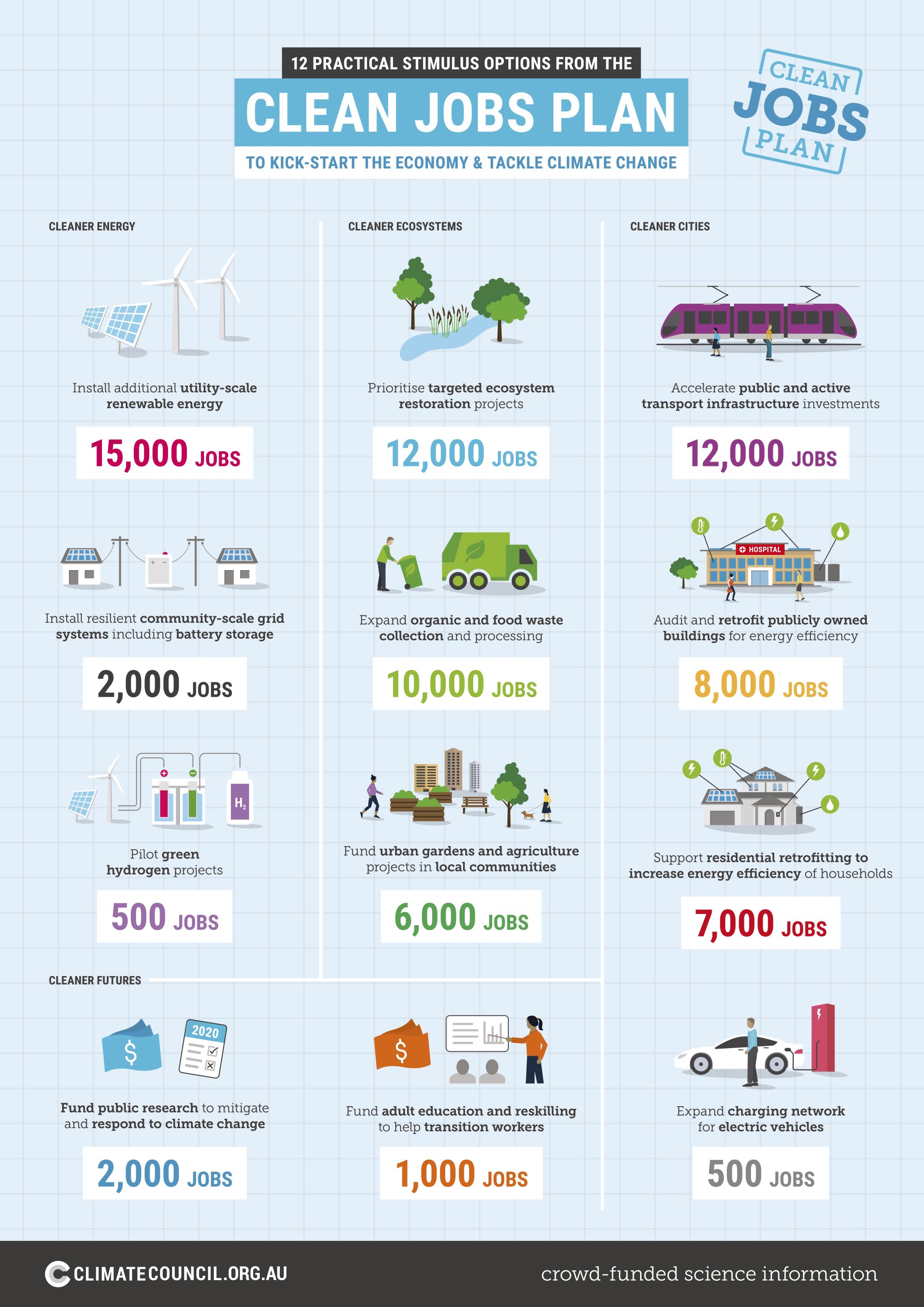
The Clean Jobs Plan is based on detailed economic modelling. It provides specific analysis for each state and territory, identifying five priority areas for each that will generate large numbers of jobs quickly, while also complementing current economic plans.
It provides excellent bang for buck. Analysis reveals that the Clean Jobs Plan is as cost-effective as, or better than, similar Australian economic recovery programs. The Clean Jobs Plan is also highly focused on maximising the value of public investment. The proposed policy opportunities were found to be highly efficient job creators due to their labour intensity. Most of the 12 options identified in the Plan offer significant opportunities to leverage private investment for the Australian economy.
Investment in pilot-scale green hydrogen facilities would unlock $4 for every dollar of public investment; utility-scale renewable energy unlocks $3 for every dollar invested; and investing in electric vehicle infrastructure, improving the collection and processing of organic waste, and community scale energy and storage, would all unlock $2 for every dollar invested.
A strong economy needs a healthy environment. By focusing on clean policy measures, governments can build modern, resilient electricity systems, develop new industries and restore and protect Australia’s unique landscapes. This protects all of us from climate change, while investing in the growth industries of the future.
Australia’s experience with the COVID-19 pandemic has shown that we can work together, follow expert advice and take decisive action to keep the virus contained. We must apply this same rigour to other pressing issues and introduce smart, clean stimulus measures to kick-start the economy, create jobs and tackle climate change.
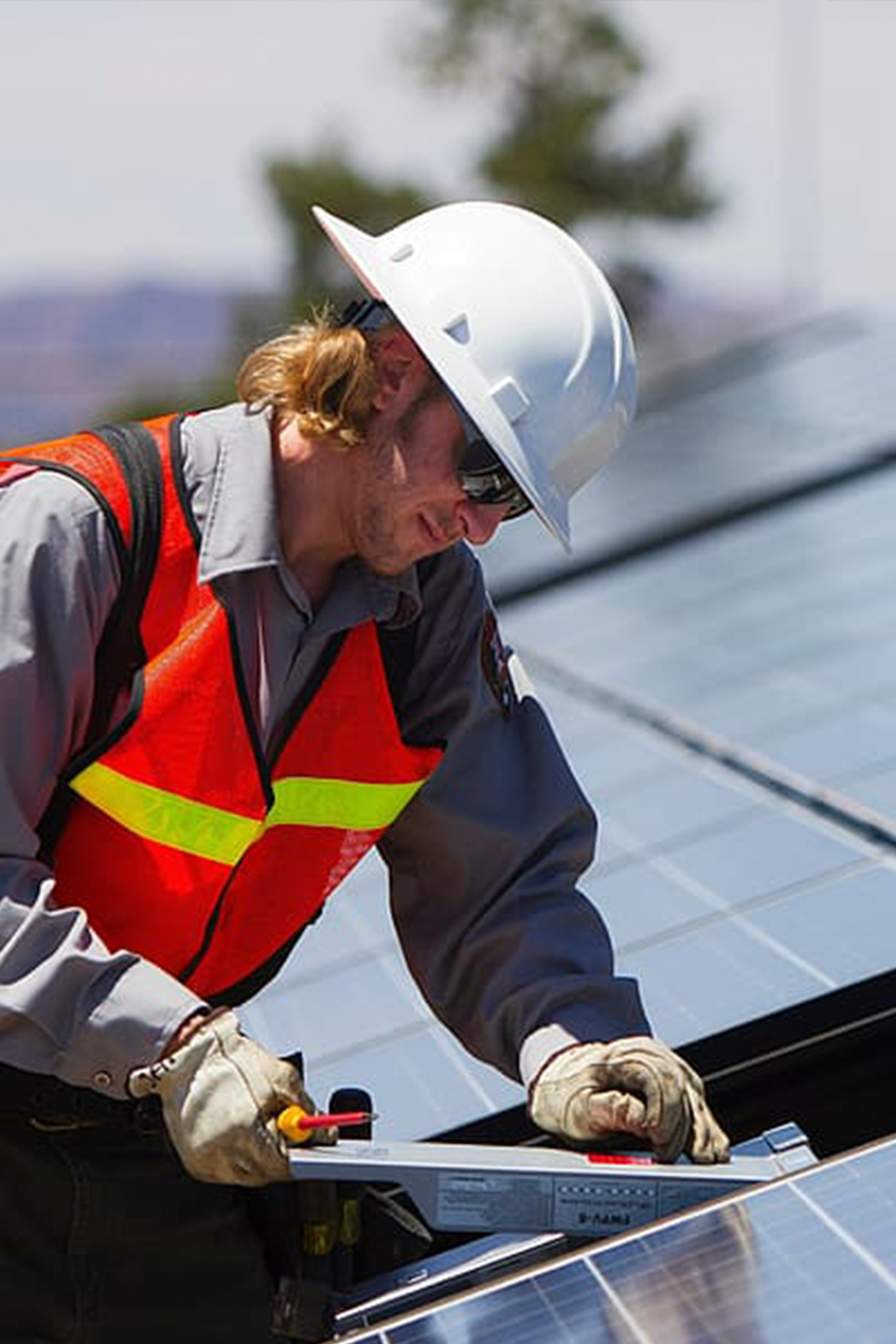
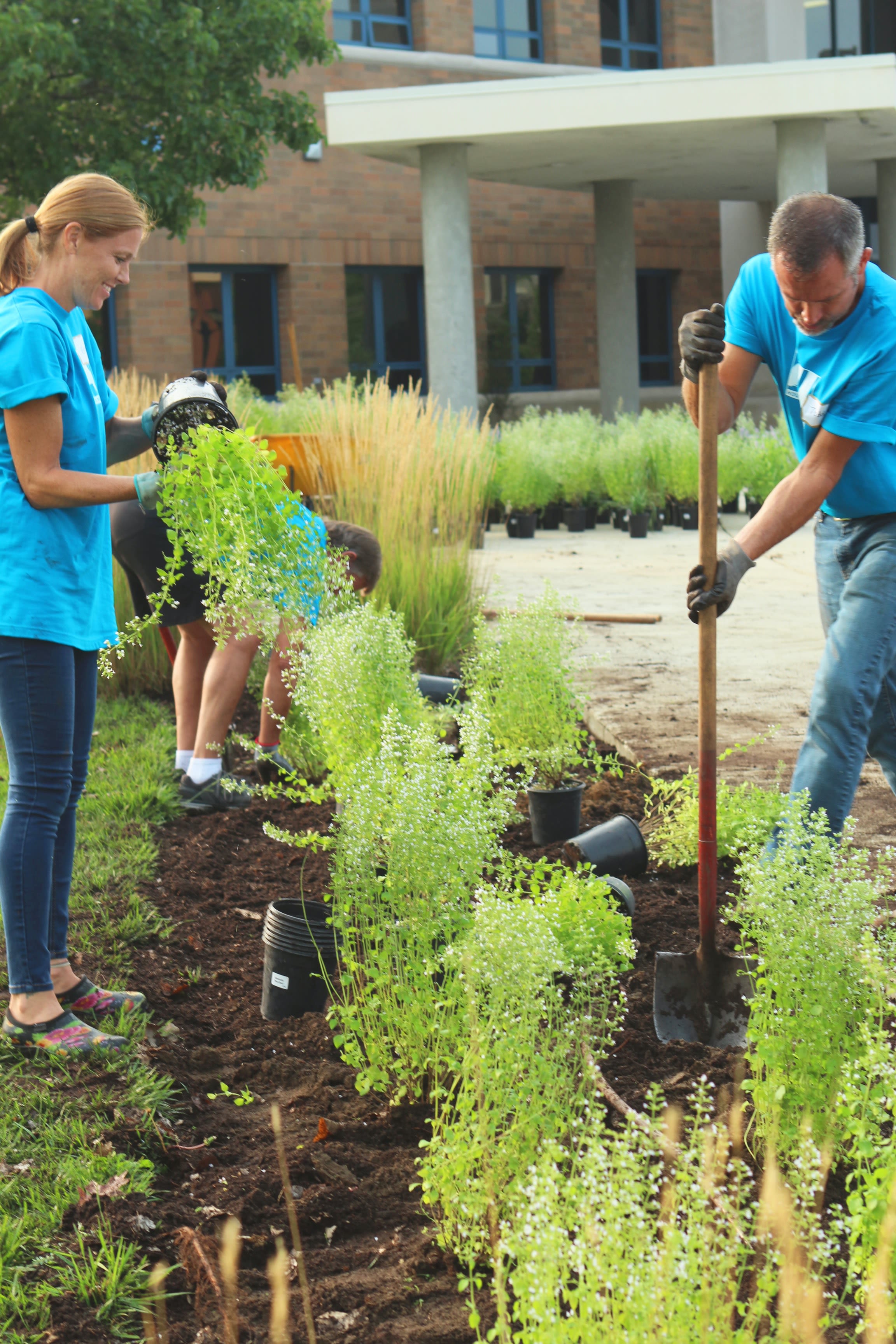
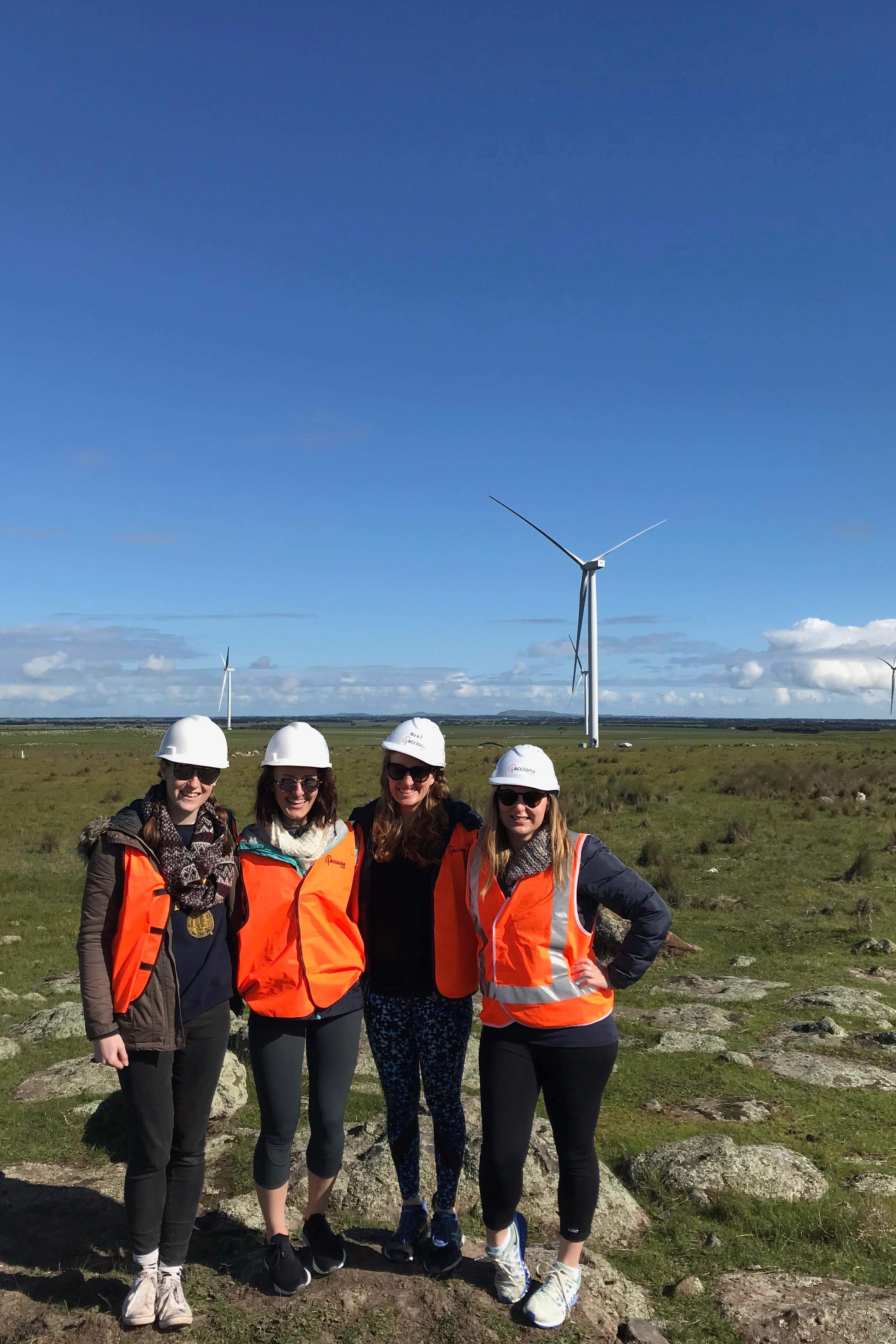
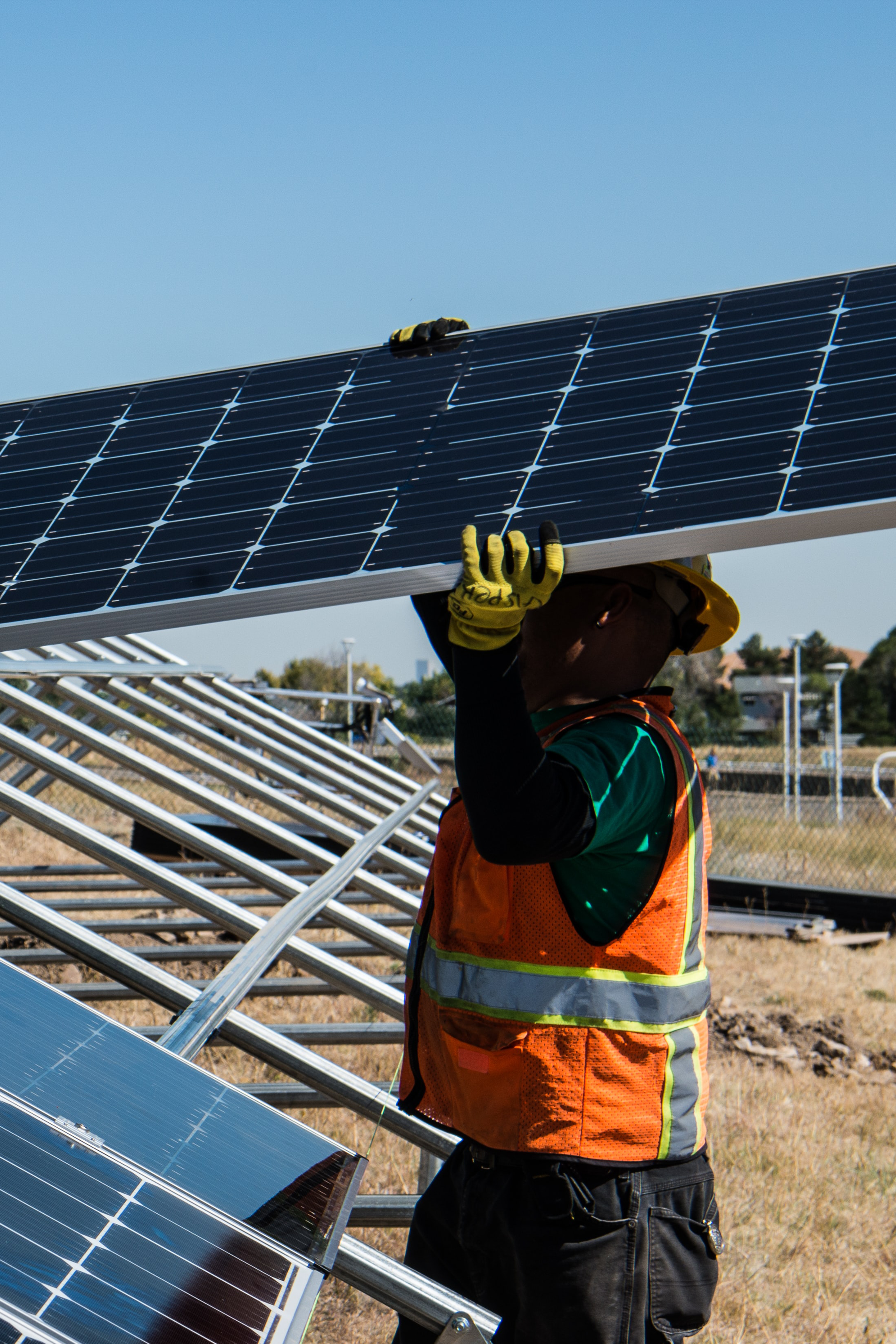

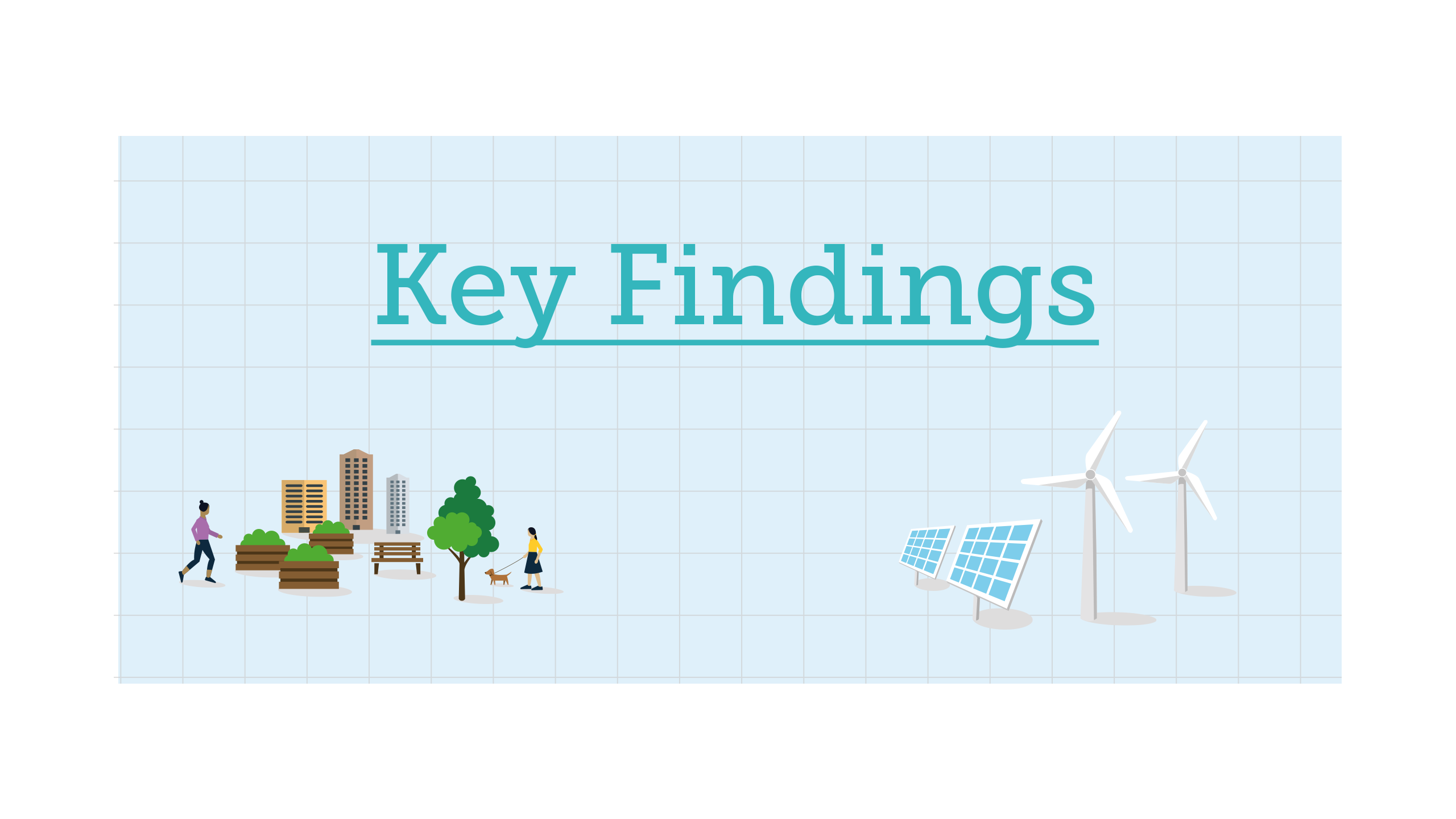
1. The Clean Jobs Plan shows how 12 policy opportunities can put 76,000 Australians to work, reboot the economy, and tackle long-term challenges including climate change.
The 12 major opportunities, identified through granular economic modelling, include:
- 15,000 jobs installing utility-scale renewable energy, including solar and wind farms, transmission infrastructure and adding utility-scale batteries.
- 12,000 jobs in targeted ecosystem restoration, including more than 5,000 in Queensland.
- 12,000 jobs in public and active transport construction, including 7,000 - 8,000 jobs for New South Wales workers.
- 37,000 jobs in other projects across Australia including in organic waste, energy efficiency in buildings, urban green spaces, community-scale storage and more.
2. Implementing the Clean Jobs Plan will help people and industries that have been hit hardest by the COVID-19 crisis, especially in regional Australia.
- Approximately 1 in 3 job openings would require minimal training, meaning that displaced workers, from hospitality workers in Melbourne to tourism operators in Cairns, could be rapidly employed.
- Seventy per cent of job opportunities are in construction and administrative, support and logistics services – sectors where 80,000 workers have already lost their jobs.
- Forty-two per cent of the job opportunities identified are for regional Australians.
- The 12 policy opportunities can be actioned by state and territory governments right away. Job creation can start immediately, and continue over the three-year analysis period.
3. The Clean Jobs Plan identifies thousands of job opportunities in every state and hundreds in each territory.
- The Clean Jobs Plan provides a top 5 priority list for economic stimulus in every state and territory, in alignment with each jurisdiction’s current priorities
- For example, utility scale renewable energy in Victoria can create 3,000 - 4,000 high and low skilled jobs and help the state meet its Renewable Energy Target of 50% by 2030.
- States and territories can create jobs where they are needed most. For example, two of the 12 major policy opportunities, ecosystem restoration and utility-scale renewable energy, can significantly benefit regional areas with high levels of unemployment.
4. Economic stimulus can set Australia up for the future by creating jobs, kick-starting the economy and tackling climate change simultaneously.
- The Clean Jobs Plan can unlock significant private investment for the Australian economy and further industry development. For example, investment in pilot-scale green hydrogen facilities would unlock $4 of private investment for every dollar of public investment.
- The Clean Jobs Plan will indirectly benefit other downstream industries such as manufacturing, trade and hospitality in delivering these projects.
- Investment in large and small-scale renewable energy assets, transmission infrastructure, and energy storage facilities can reduce energy costs for households and businesses and provide clean, reliable power for the future.
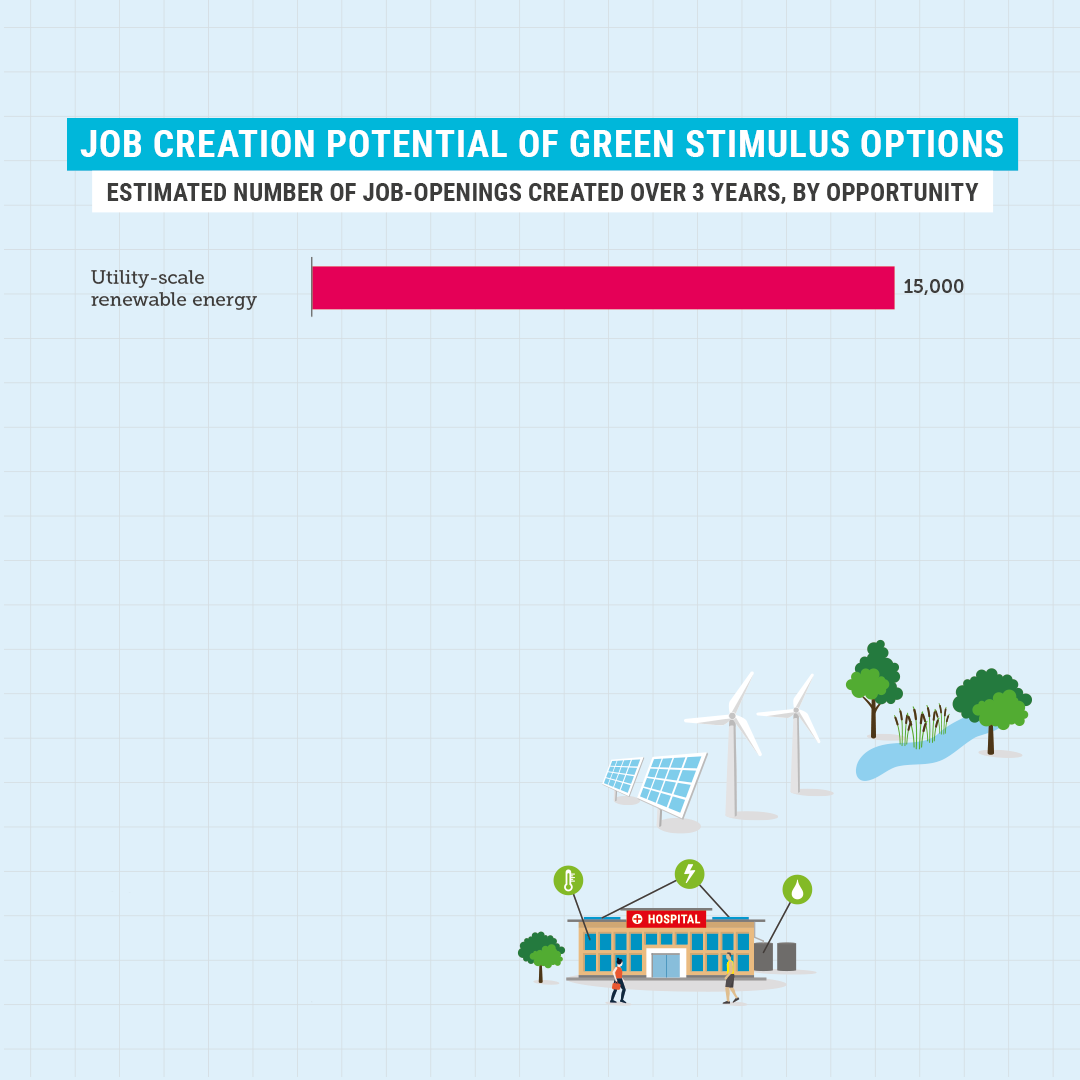
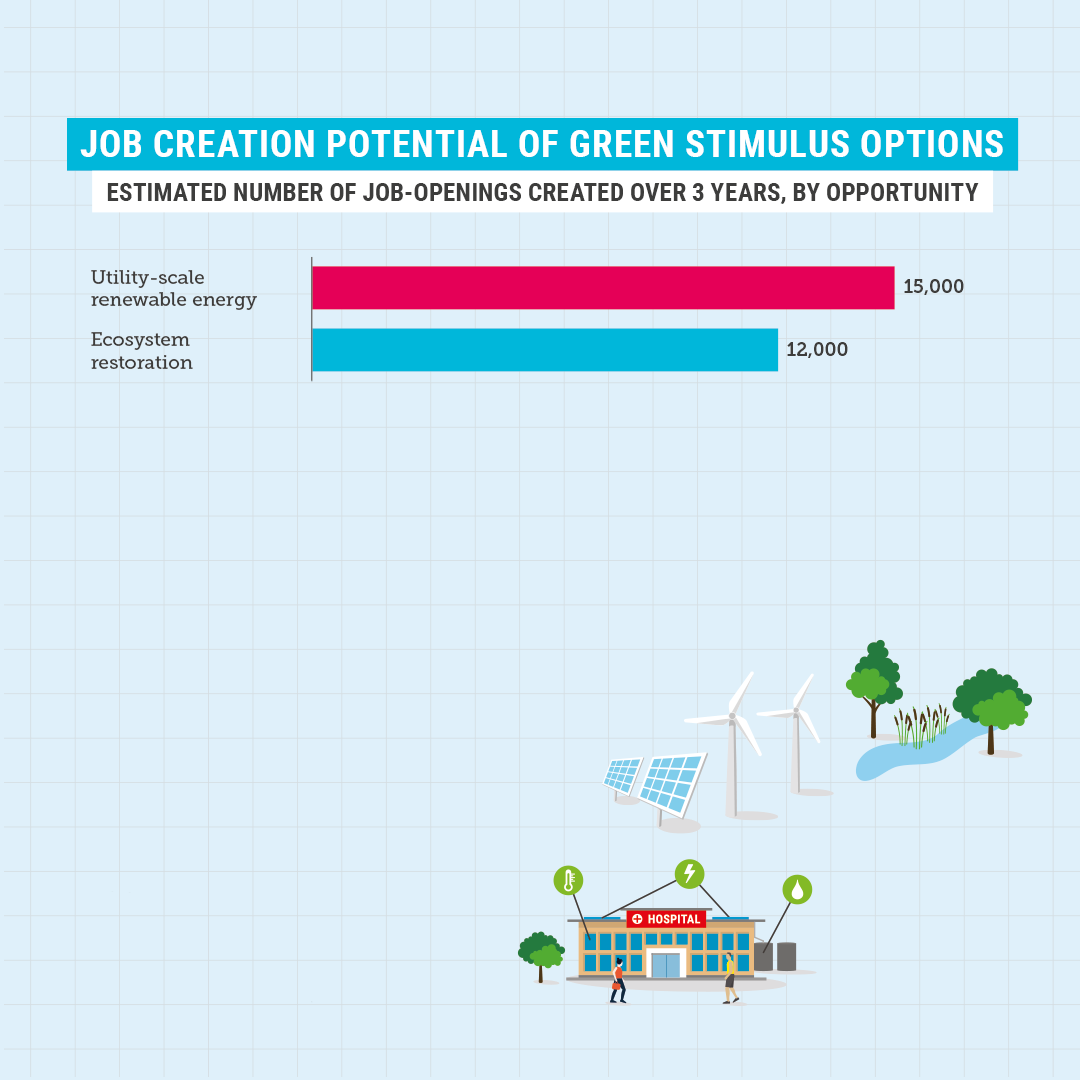

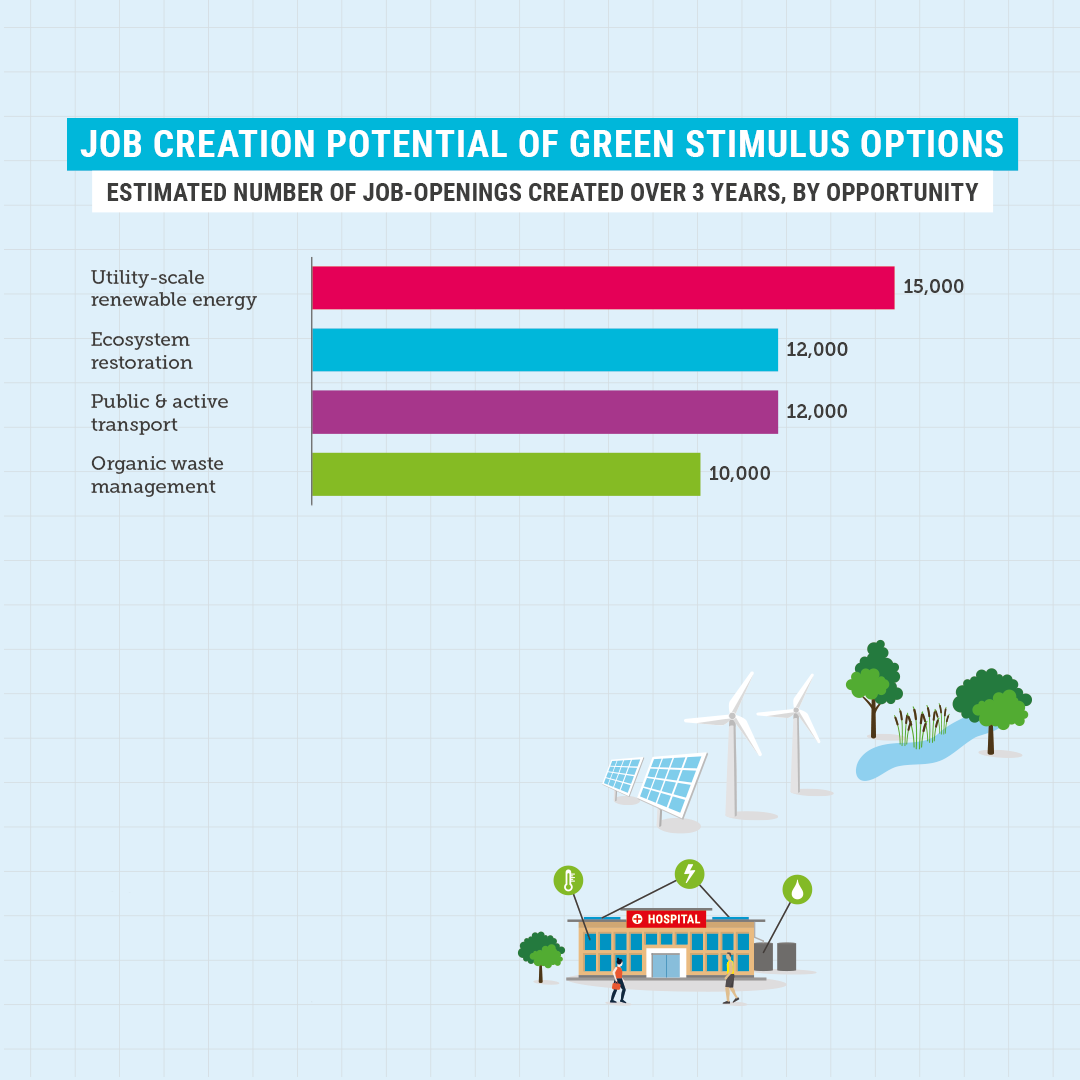
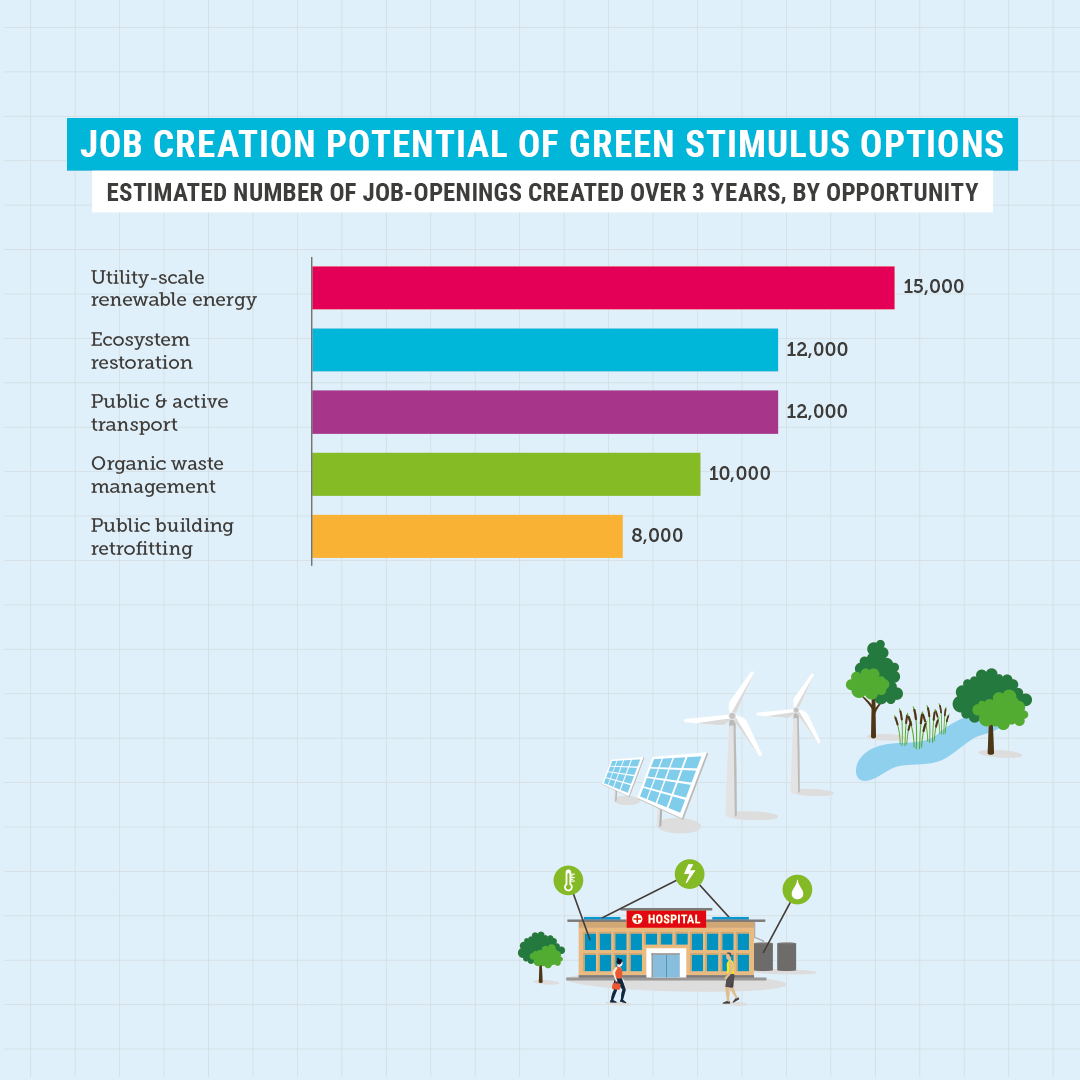

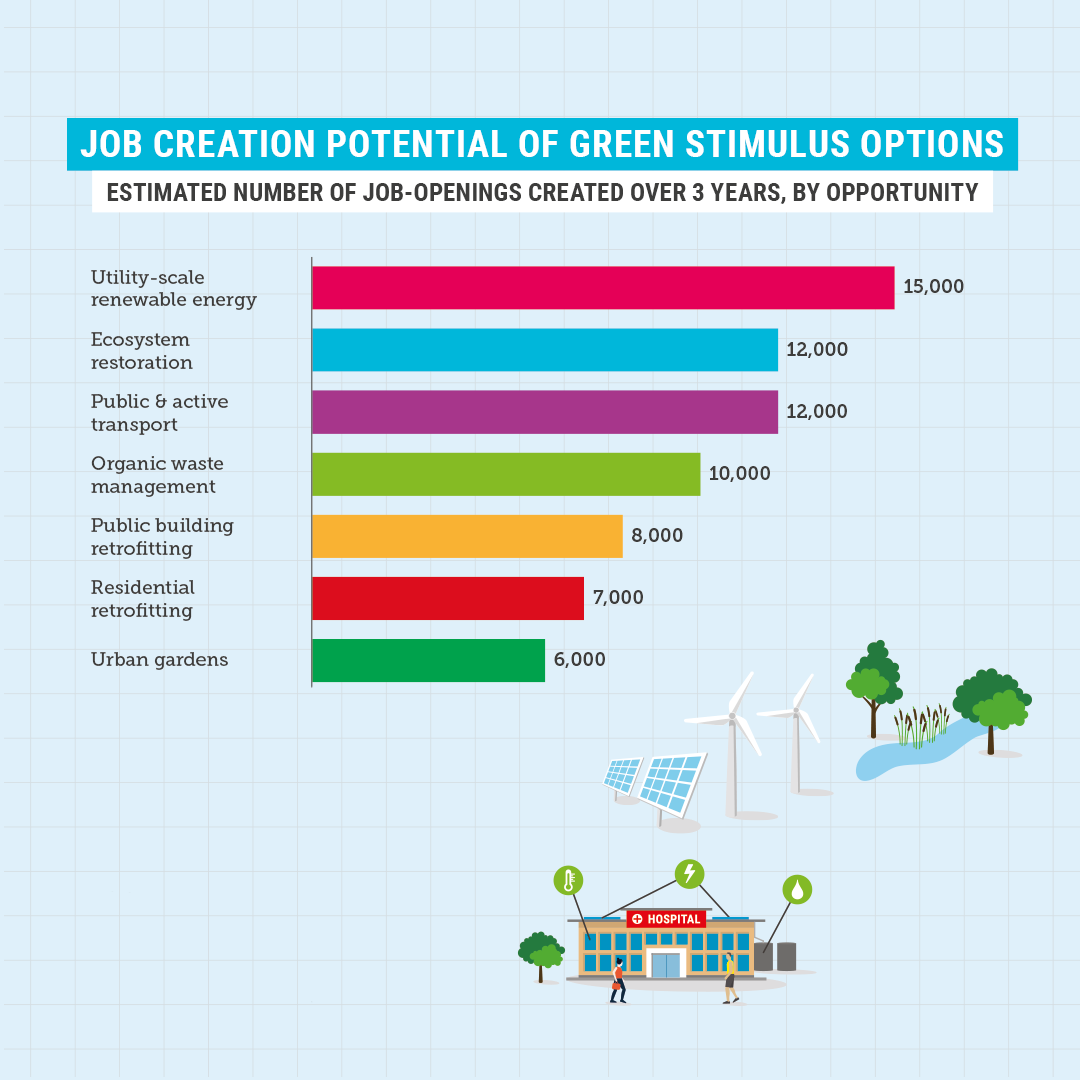

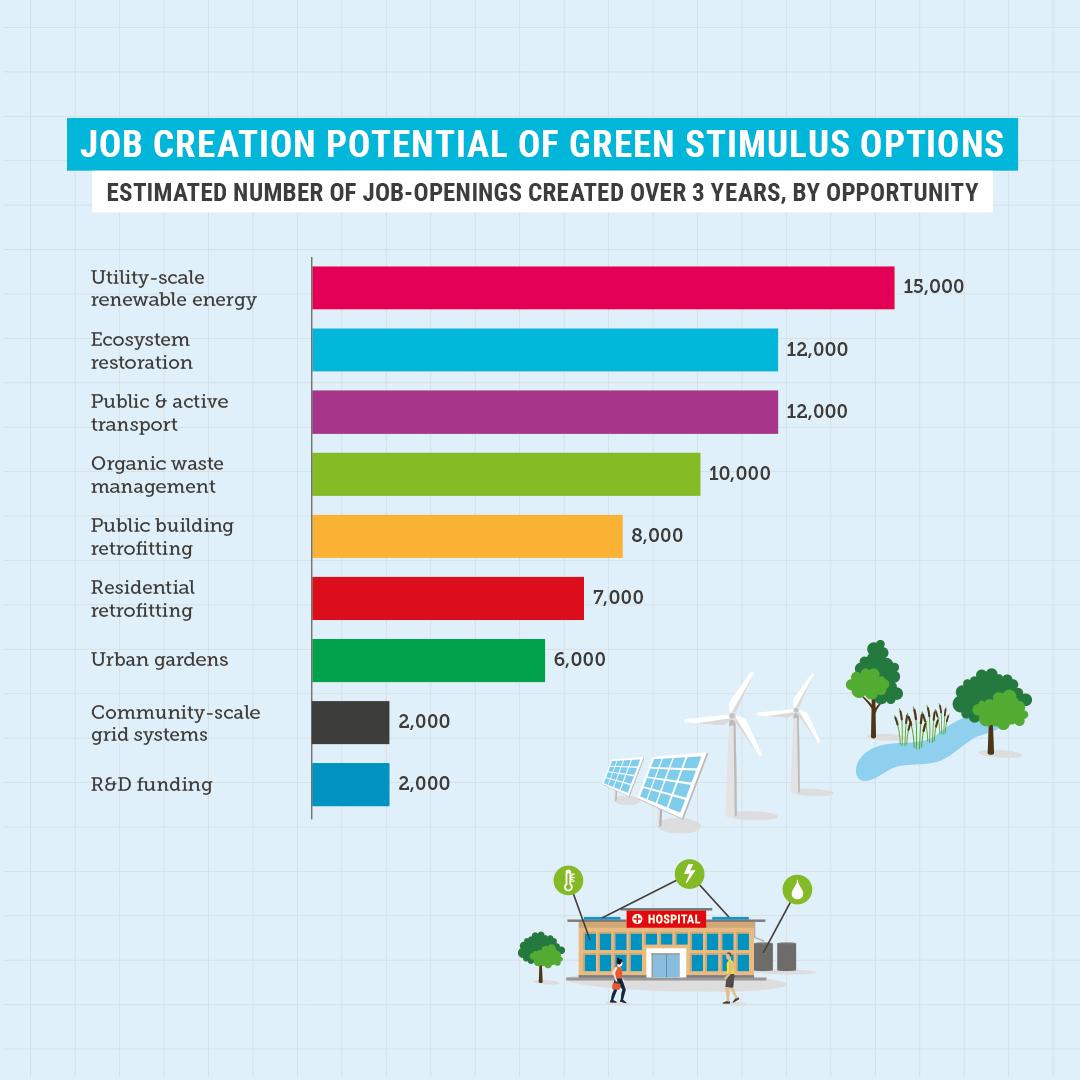
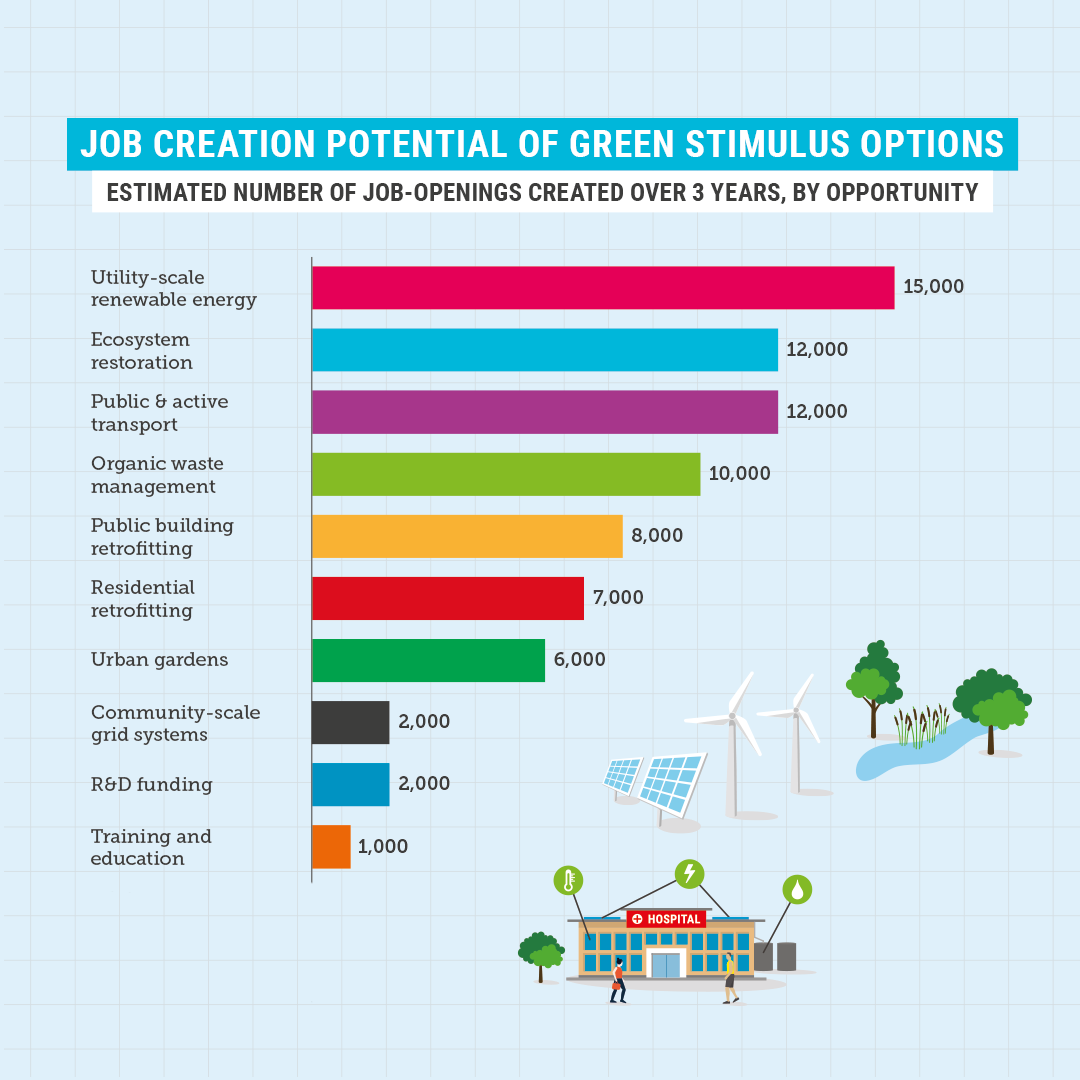
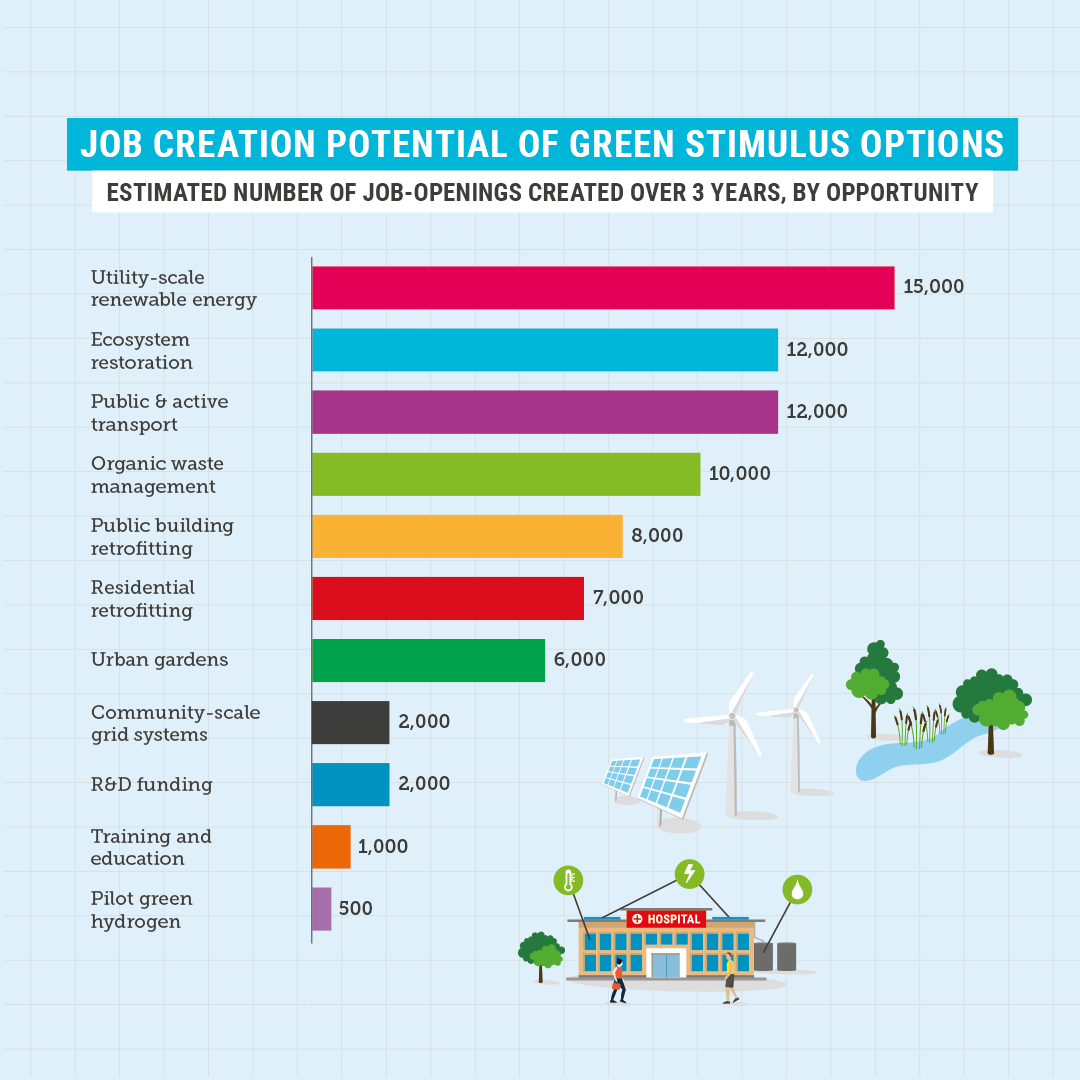
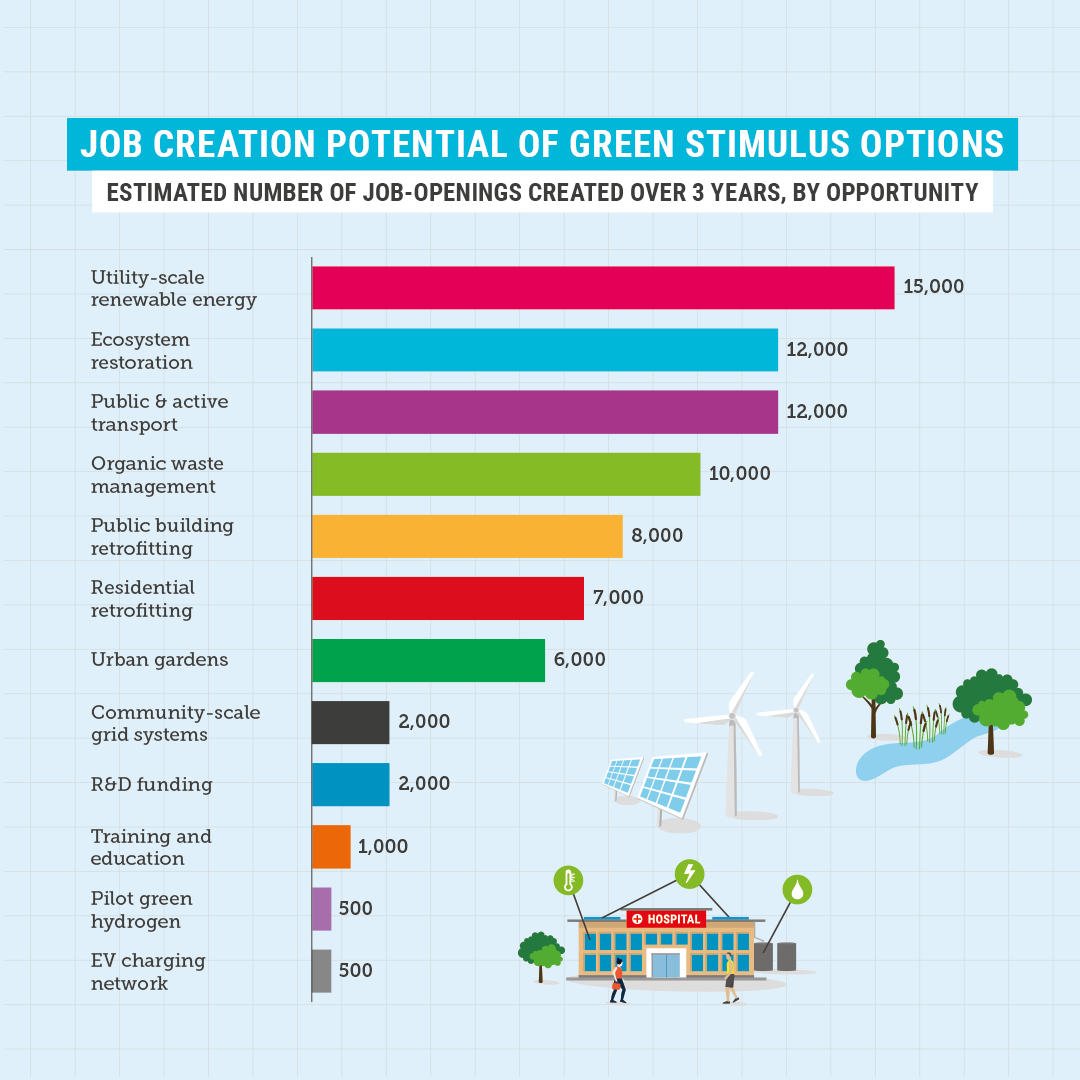
“The Clean Jobs Plan is unique because of the speed at which it can get people back to work. It puts us on a practical, jobs-rich path and focuses on areas most in need. It sets us up for the future, by creating jobs and tackling climate change. It’s a win-win solution.”
Climate and COVID: why we need a two-pronged approach
Climate change is a major threat to Australian lives and livelihoods. Australia is over 1°C warmer than it was 100 years ago. Extreme weather events, such as heatwaves and dangerous bushfire conditions, are worsening and the Australian economy is vulnerable to these escalating climate risks. Flow-on effects will be felt across the country and will worsen unless emissions are lowered.
Economic authorities agree that the climate crisis threatens Australia’s economic well being. But the Australian economy can thrive in a low emissions world, and COVID-19 has created a new, urgent need for jobs to support Australian families and avoid long-term harm.
The Australian economy has already lost 838,000 jobs to the COVID-19 crisis. Over half a million Australians have stopped looking for work. This represents significant hardship among Australian households and a threat to the long-term productivity of our economy.
As businesses fail and people stop looking for work, job creation tends to return slowly. Stimulus policies that spur public and private investment are needed to hasten economic recovery. Government investments can provide the money needed to support business activity and jobs and can also encourage further private investment. Clear action from governments can provide businesses, workers, and investors the certainty they need to take risks – to retrain, keep their businesses open, or make new investments.
An effective stimulus program could deliver jobs quickly and address climate change while improving Australia’s long-term economic outlook. Australia faces a unique opportunity to rapidly rebuild a low-emissions post-COVID economy. A stimulus package that focuses on the creation of clean jobs could be pivotal in supporting a recovery whilst also growing new industries and encouraging existing businesses and workers to build the capabilities they need to thrive in a low-emissions world.
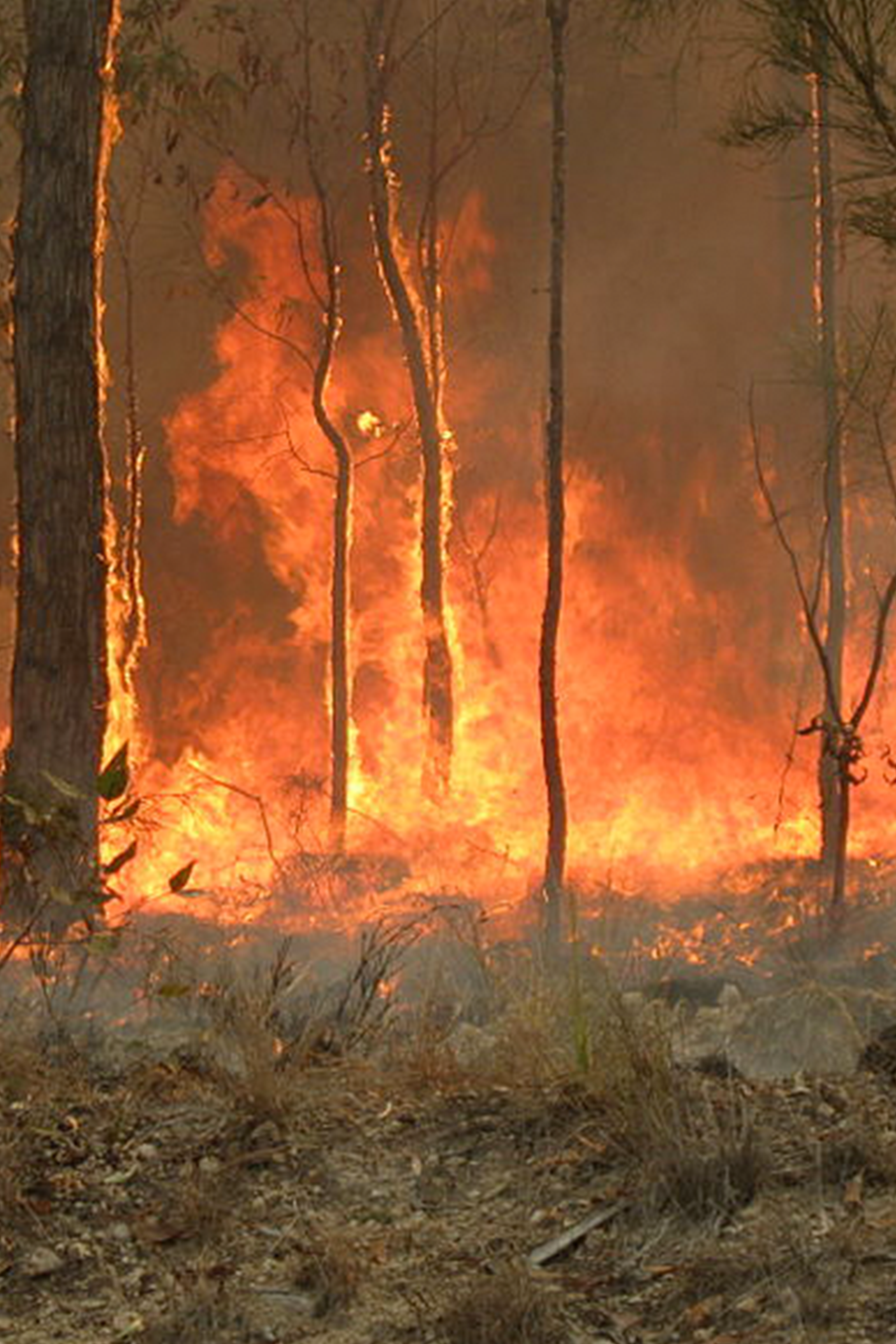

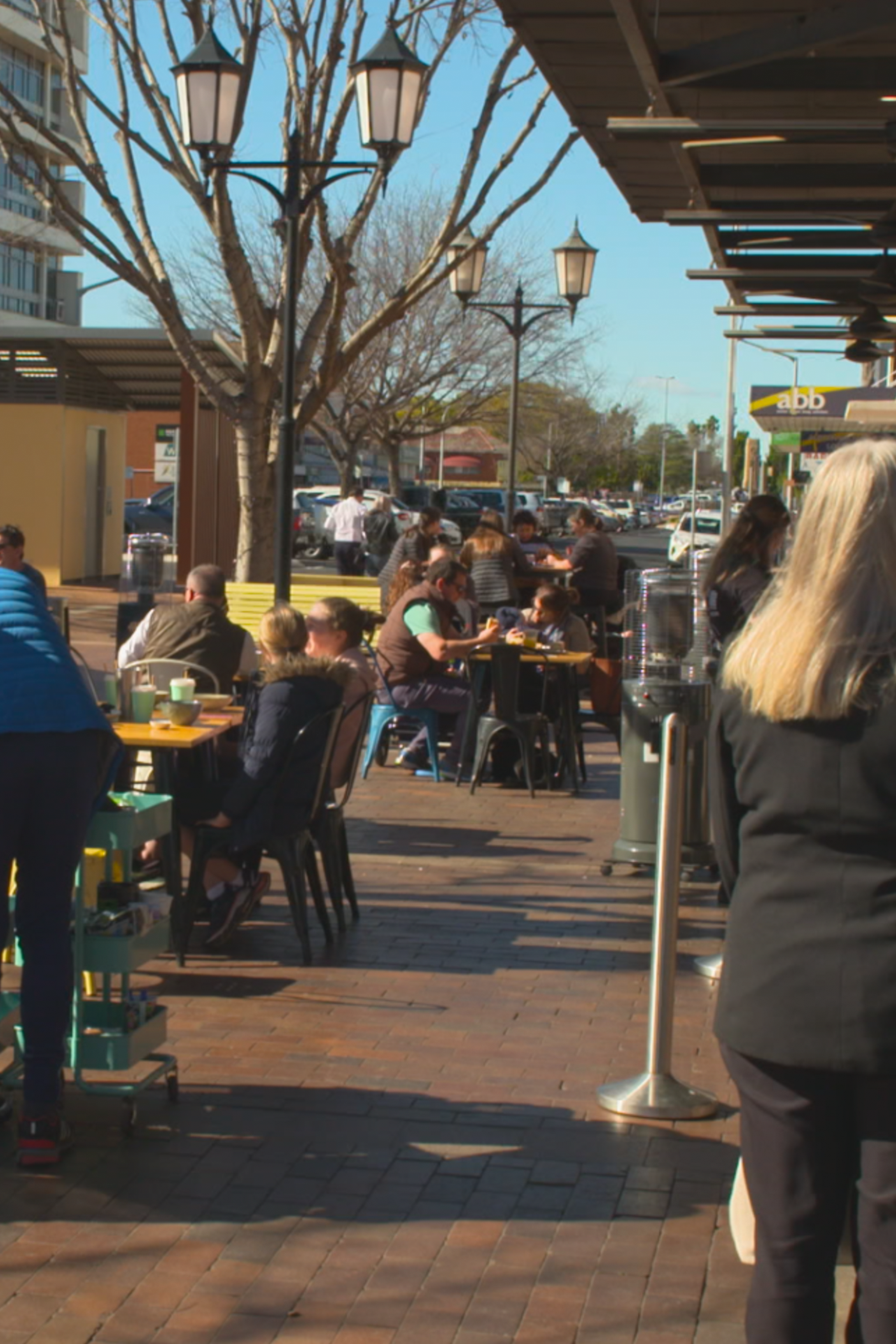
“The Clean Jobs Plan identifies a dozen policy options which can create jobs fast, where they are needed and for people who need them most. The job creation could start immediately and continue over three years. Federal, state and territory governments all have the opportunity to put these measures in train. Australia has seen steep job losses throughout the COVID-19 pandemic. But with the right policy measures, thousands of jobs could be created in large-scale renewable energy, ecosystem restoration and the collection and processing of organic waste."
State and territory policy breakdown
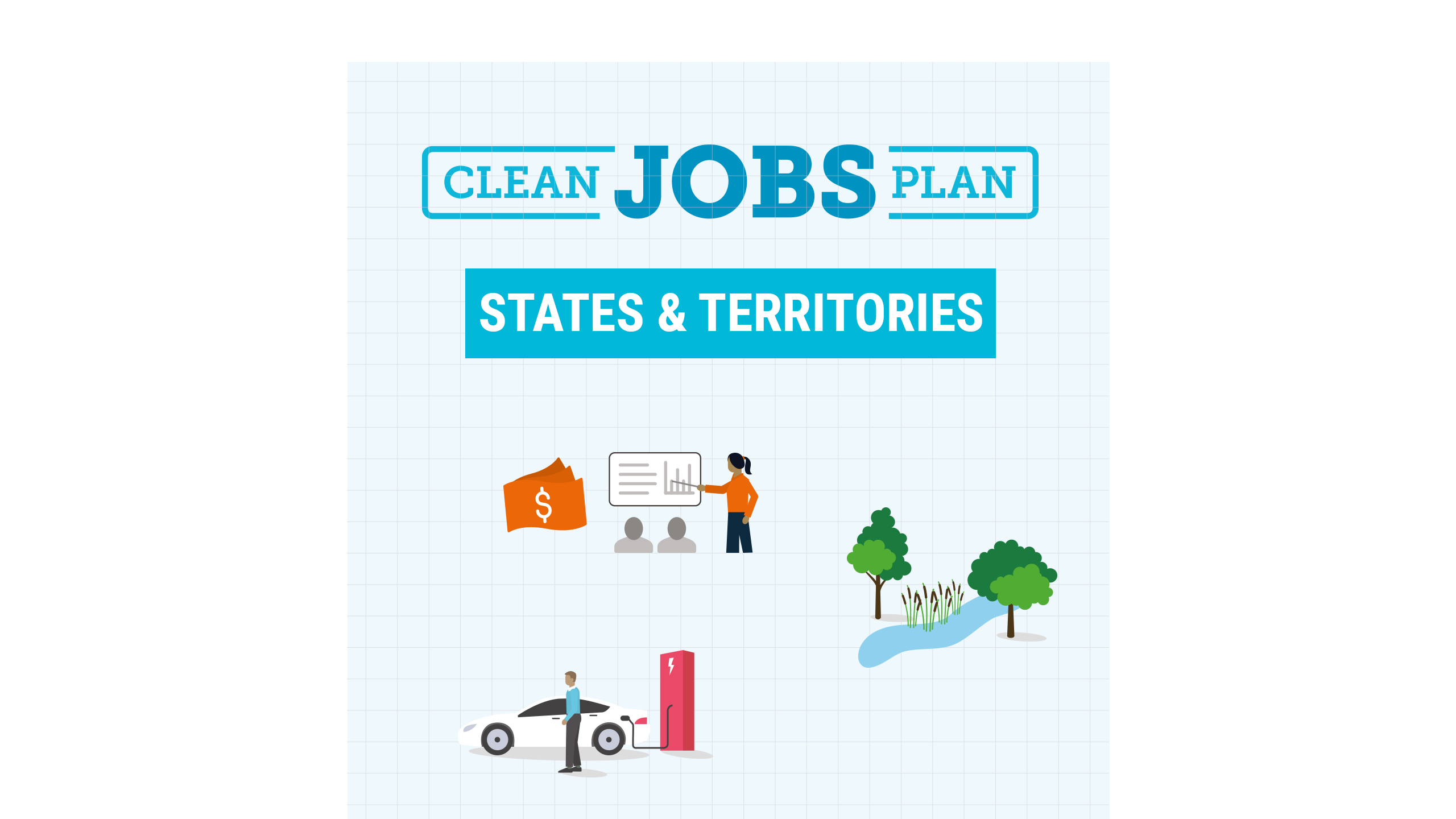
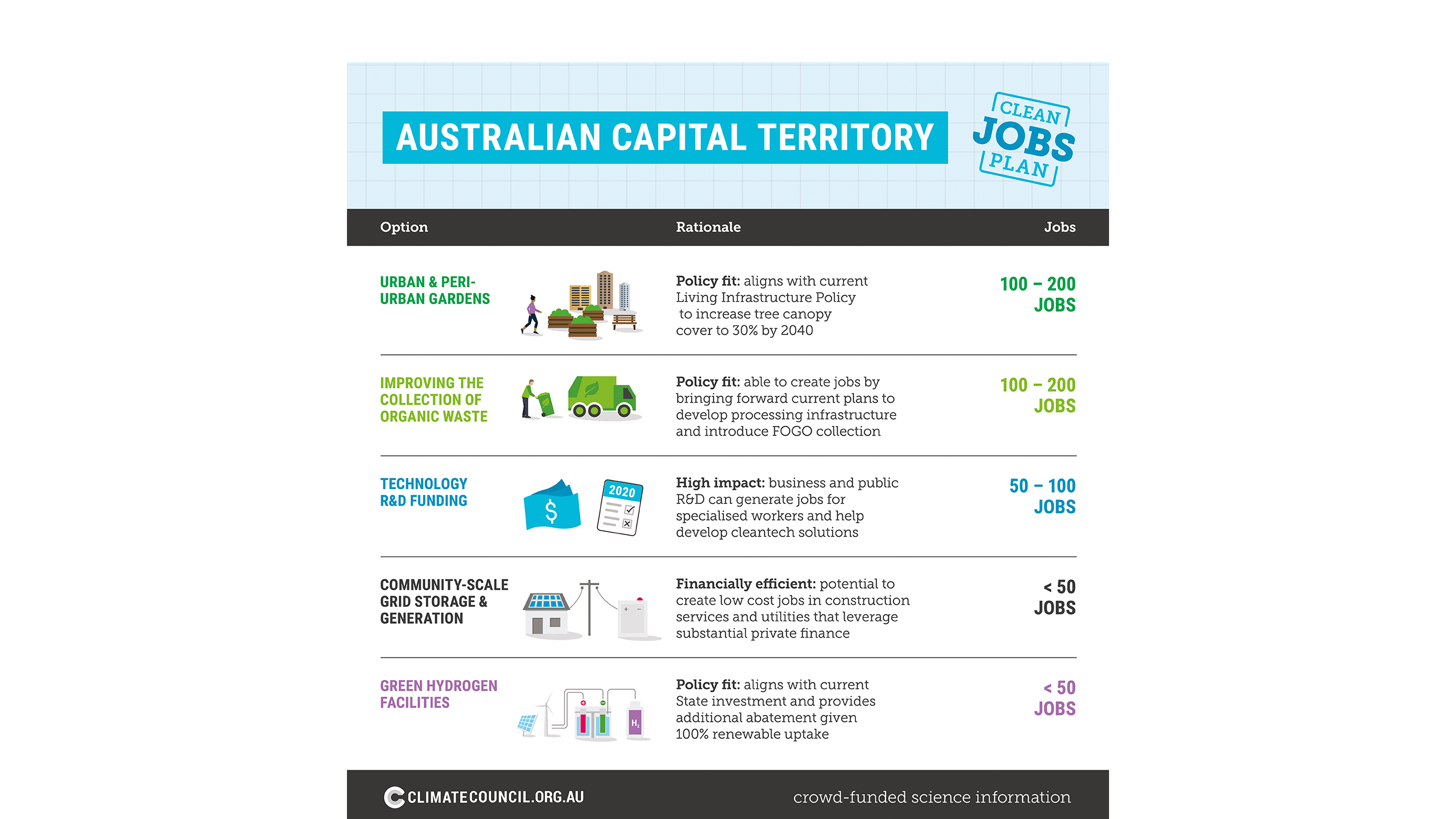
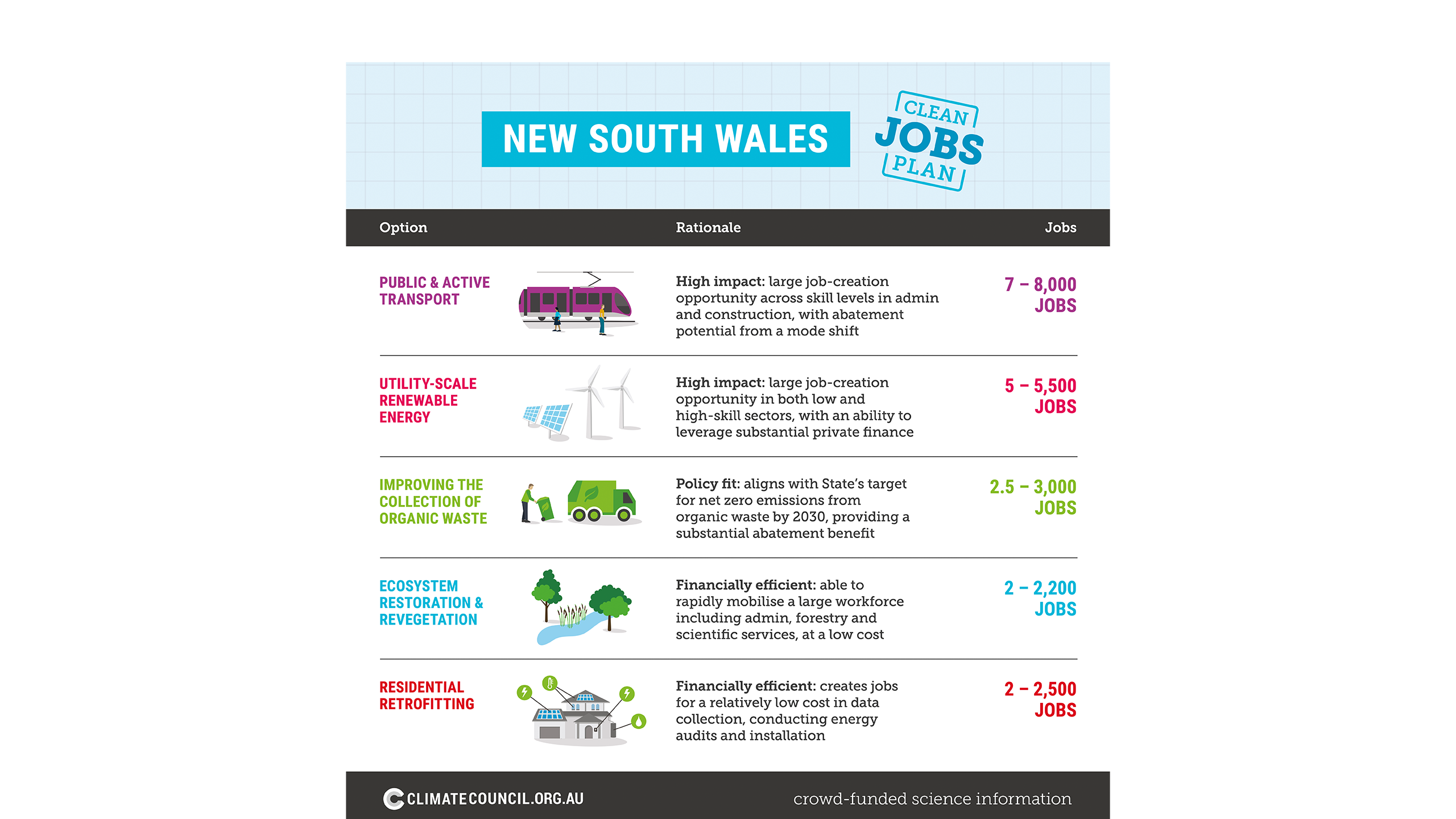
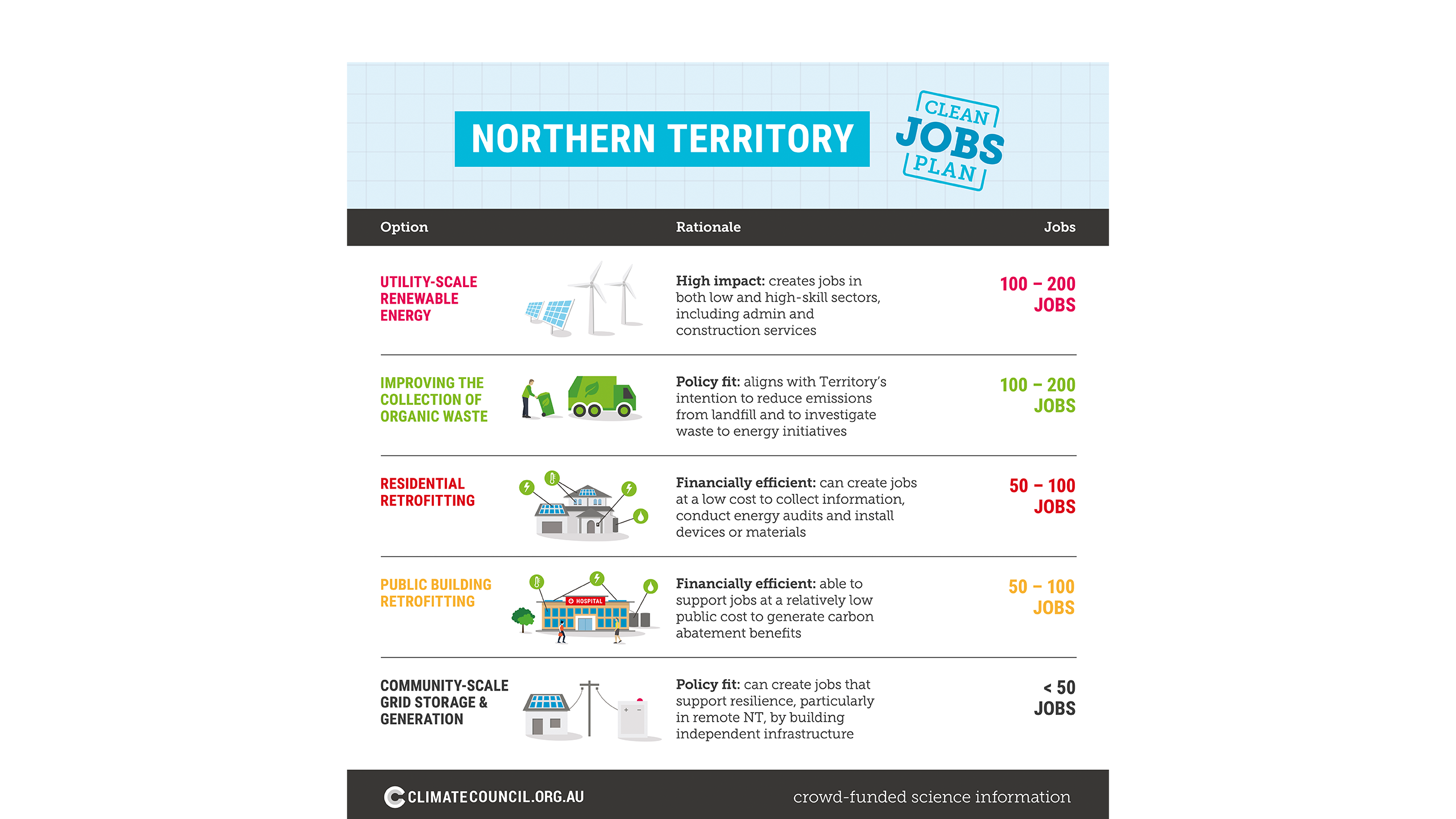
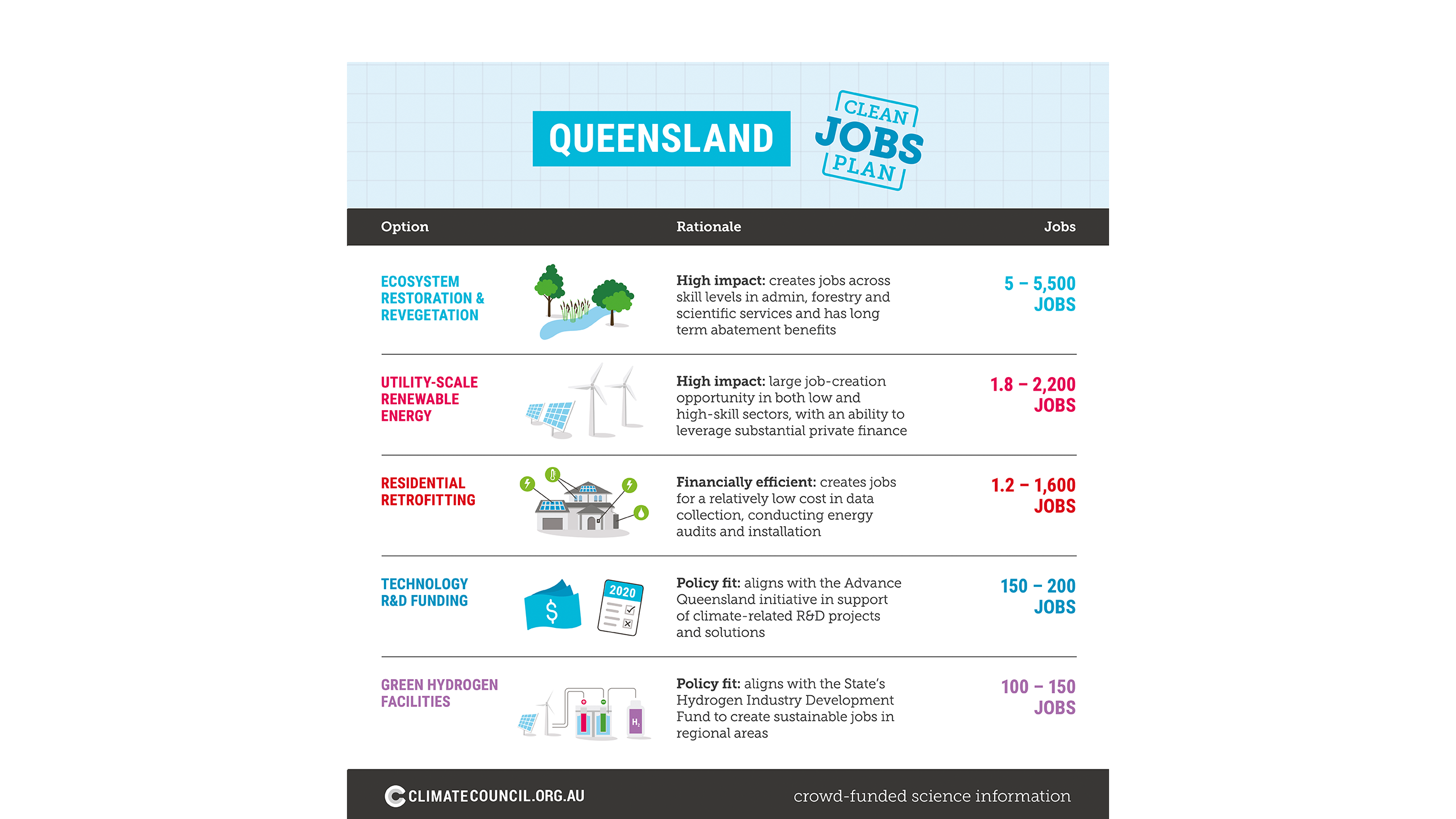

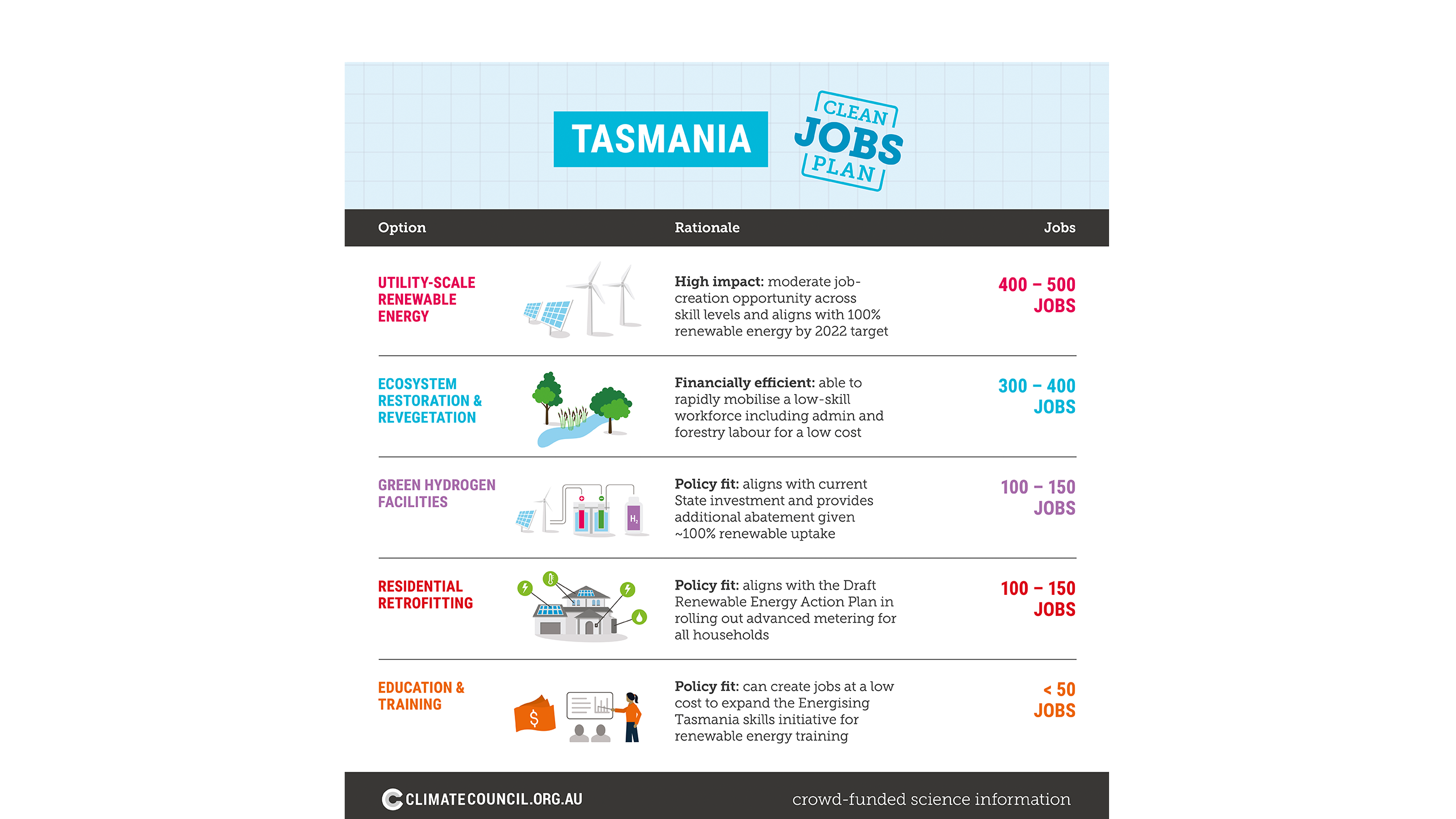
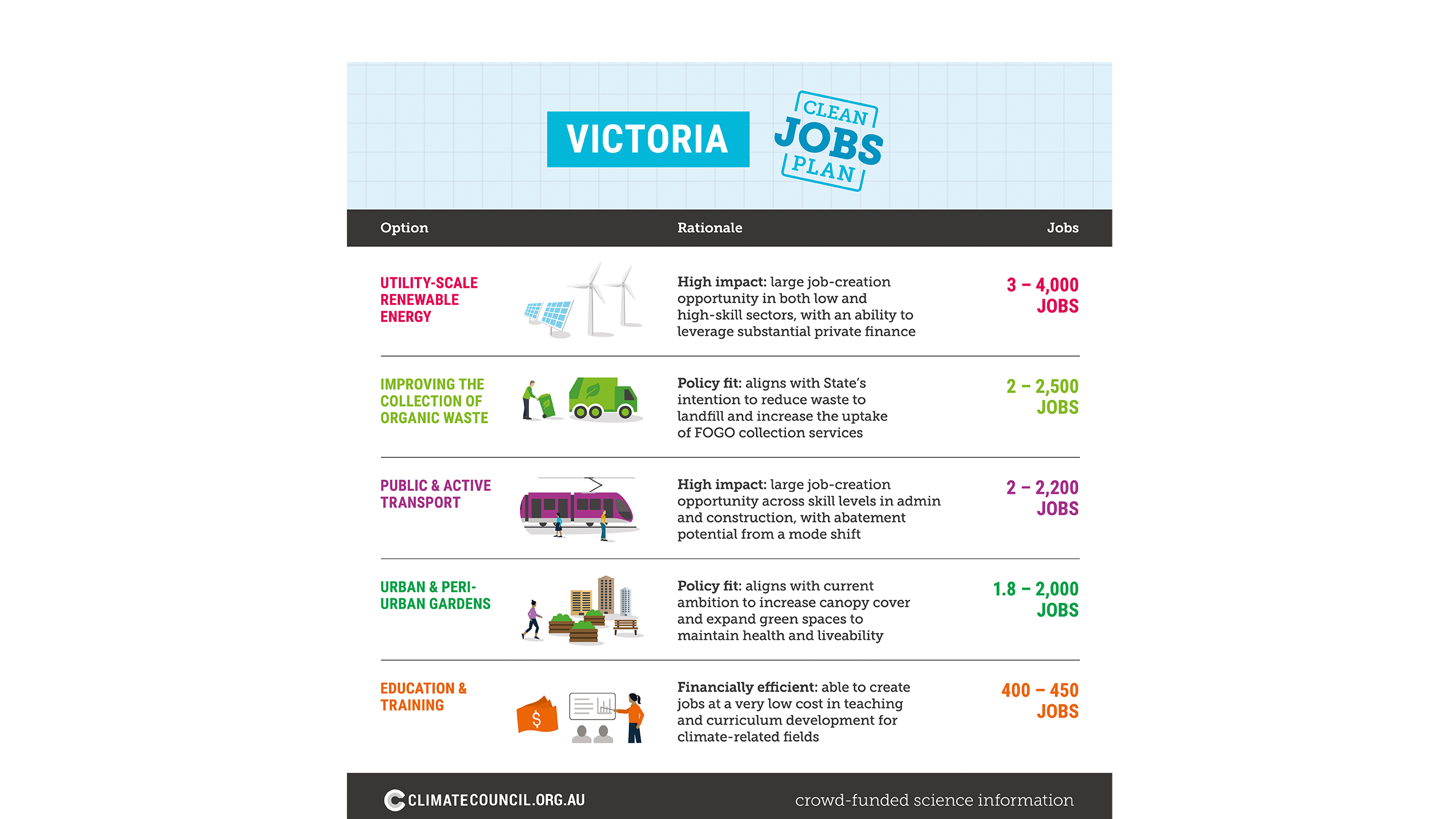
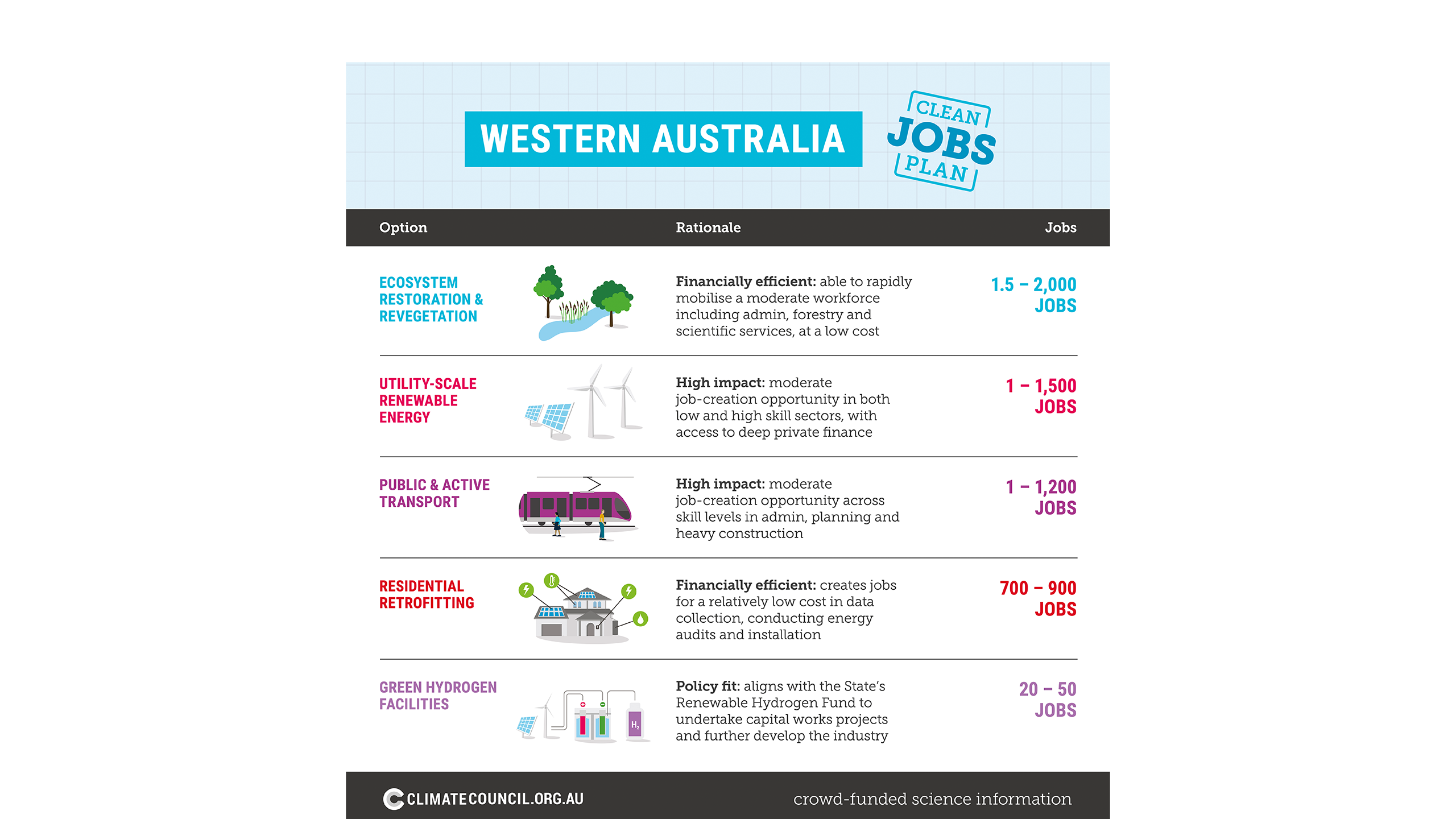









Case Study: Dubbo
The New South Wales Government has recently taken several steps toward establishing Australia’s first Renewable Energy Zone (REZ) near Dubbo, dubbed the Central-West Orana REZ.
A REZ is an area with exceptional wind and solar resources and high potential for large-scale renewable energy projects, but where coordinated planning is required to ensure that sufficient transmission is built so that this potential can be realised at the lowest possible cost. As this report demonstrates, governments can create thousands of jobs across the country by accelerating utility-scale renewable energy projects. Every dollar of public investment in large-scale renewable energy will unlock a further $3 from the private sector.
To help create jobs in regional NSW, the state government could accelerate the Central-West REZ by streamlining approvals where appropriate and providing grants, low-cost loans and other financing for the installation of large-scale clean energy infrastructure. A strong pipeline of reliable work in the area and billions of dollars worth of investment could be created by enabling some of the more than one hundred projects that have applied to be a part of the REZ. This would kick-start the local economy by helping locals across the Central West of NSW get back to work, setting the region on track to be a long term renewable energy employment hub and cutting greenhouse gas emissions across the state.
There are dozens of projects around Dubbo and Orange proposed for development, including the following four projects which alone could create 610 jobs in the region.
- The Dunedoo solar farm – 66MW and could create 100 jobs (near Dubbo)
- The Molong solar farm – 39MW and 160 local jobs (near Orange)
- The Uungula wind farm – 400MW (enough to power 170,000 homes) and 250 jobs (between Dubbo and Orange)
- The Gilgandra solar farm – 50MW and 100 jobs created (near Gilgandra north of Dubbo)
